

65 Engaging 8th Grade Writing Prompts for Creative Essays
Creative writing is a discovery process, and 8th grade is a great time to encourage your students to find their voices. It’s the final grade before high school, and it’s a time when students are really discovering themselves and their place in the world as they leave middle school.
That’s why…
It’s so important to give your 8th-grade students writing prompts that will help them explore their thoughts and opinions. These 8th-grade writing prompts for creative essays are designed to do just that.
Journal Writing Prompts

Journaling is a great way to get your students’ creative juices flowing. It’s also a great way to get them thinking about their own thoughts and experiences. Here are some journal prompts to get your eighth graders started:
1. If you had the chance to travel anywhere in the world, where would you choose? What attracted you to that location?
2. Do people require a compelling reason to live? How would you characterize the purpose’s evolution over time?
3. Imagine you could go back in time and give someone advice. What would you say?
4. When it comes to writing, how do you feel? Consider something else in your life when comparing your feelings about writing to it.
5. Create a typical day in the life of an eighth-grader with a short story.
6. Write about your favorite movie or book. Why do you love it so much?
7. What do you like about your appearance?
8. Consider what you value in life and how it relates to where you want to be in five years. Make a personal vision statement for your life.
9. What are your thoughts on the notion of vulnerability? Have you ever been anxious when you’ve felt weak or exposed?
10. What are your biggest regrets so far in life? Why do you feel the way you do about it now?
11. Choose someone older, such as a grandparent. What is the most significant lesson you’ve learned from that individual?
Creative Writing Prompts
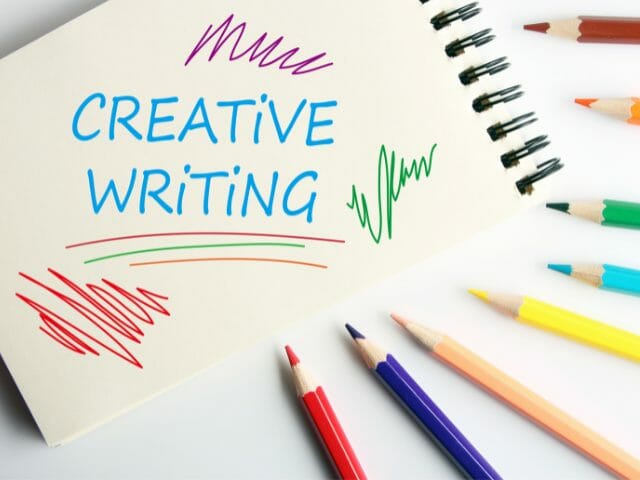
Creative writing is all about expressing yourself in your own unique way. That’s why it’s such a great activity for eighth-grade students. By allowing young writers to flex their creative muscles, they’ll be able to explore their thoughts in a way they might not have before.
Here are some creative writing prompts to get your 8th graders started:
12. If you had one opportunity to make a difference in the world, what would it be and why?
13. What would you change if you were in charge of your school and why?
14. If you had the power to transform your city’s appearance or structure, what would you do and why?
15. Who would you invite for dinner if you could choose any famous person?
16. Write a short story about what your life would be like if you lived in the cold deserts of Mongolia.
17. Your instructor has requested that you present a lesson with the fifth-graders. What will you speak about and why?
18. Name one thing you’d want to accomplish in the future. Describe why it is so essential for you and how you intend to achieve it.
19. “Don’t judge a book by its cover.” Have you ever heard that? What’s your take on it? To support your standpoint, utilize precise details and scenarios.
20. The town officials want you to create a community for the future. Share your vision using specific information and examples.
21. What would your brain be like if it were a physical location?
22. Write a scenario in which a usual family activity goes horribly wrong.
Expository Writing Prompts
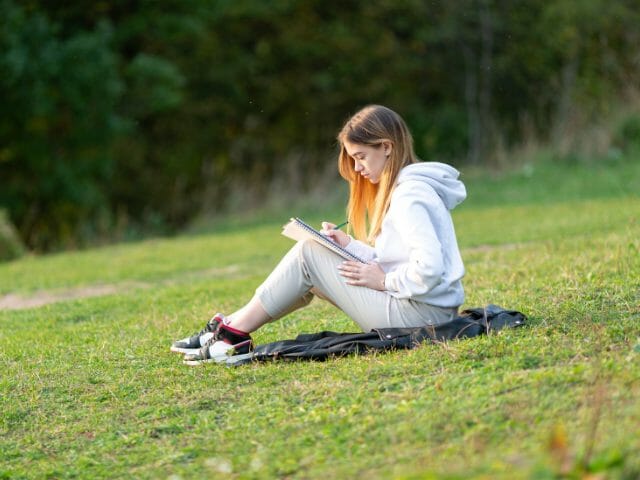
Although similar to creative writing, expository writing is a different animal altogether. Here are some exciting prompts to get your middle-schoolers started:
23. What’s the most unusual location you’ve ever visited? Describe it in detail.
24. Tell us about your last birthday, from the moment you awoke until you went to bed that night.
25. Imagine your dream home. Make a list of each room and its features.
26. How do you get to your grandparents’ house or another family member home?
27. Write about your typical school lunch and your experience eating in the lunchroom.
28. Consider a career you’d like to have one day. Describe a typical working day in that position.
29. What unique characteristics do you possess as a member of this generation? How are people your parents’ or grandparents’ age different from yours?
30. What are three fun ways your family might spend a family vacation together?
31. Why do you think someone you know should be regarded as a leader?
32. Who’s your favorite teacher, and why?
33. If you had to be an animal, which one would you choose and why?
Precise Language Writing Prompts
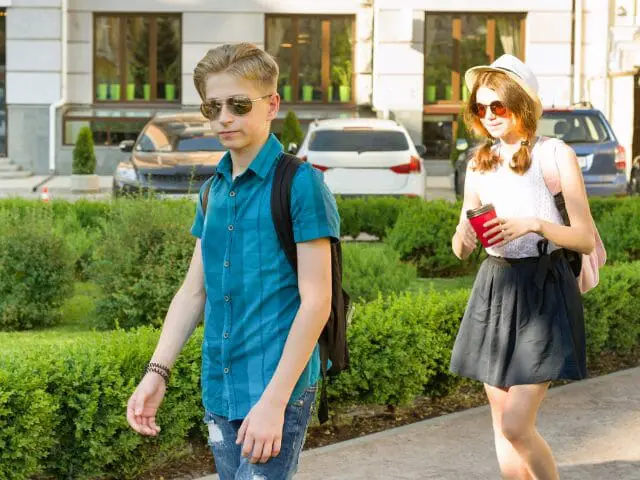
When it comes to writing skills, precision is key. Your students need to communicate their thoughts and feelings clearly and concisely. That means they need to have a vast vocabulary and use it effectively. Here are writing prompts to help your students hone their skills:
34. Write a news article about a recent natural disaster.
35. Think about a time when you were extremely proud of yourself. Write a first-person account of your proudest moment.
36. What is your earliest memory of feeling fear? Write a brief story about that experience.
37. Are all teachers educators? Are all educators teachers? What is the difference between a teacher and an educator?
38. When should you say a specific number instead of “a lot” to avoid being mistaken?
39. What exactly makes something “made from natural components” distinct from anything grown in your backyard?
40. What is the difference between race and nationality?
41. What is the difference between music and sound?
42. What is the primary difference between being wise and being intelligent?
43. How can you tell the difference between an opinion and a fact?
44. Is it correct to refer to an 8th grader as a “young person”? Why or why not?
Counter-Argument Writing Prompts

To become better writers, students of this age group need to be able to anticipate and refute counter-arguments to their own claims. Here are some counter-argument writing prompts to get your reluctant writers thinking:
45. An old saying goes, “Early to bed, early to rise, makes a man healthy, wealthy, and wise.” Explain why this might not be true.
46. Some individuals believe that crying is a sign of weakness. Disabuse them of this misconception.
47. Some schools enforce a dress code to discourage bullying and encourage learning. Explain why you disagree with forcing students to wear uniforms.
48. Paranormal investigators sometimes utilize photographs as “evidence” that ghosts exist. Explain why a photo of a ghost might not be considered evidence.
49. Cats are widely regarded as the greatest pets. Why might dogs be a better choice?
50. Some people think that nothing is more essential than fame or popularity. Why do you feel differently?
51. Some people believe that smartphones shouldn’t be allowed in school because they’re a distraction. In favor of allowing phone usage in class, create an argument.
52. Some people believe that there should be no restrictions placed on freedom of speech. Defend your position by explaining why freedom of speech should be limited on occasion.
53. People sometimes believe that important core principles, such as religion and politics, must be shared by good friends. Explain why this isn’t necessary.
54. Some people believe that honesty is more important than compassion. Explain why kindness is more essential at times in your essay.
55. Many individuals think it’s better to be single than in a relationship. Why might being in a relationship be preferable?
Informational Writing Prompts

Informational writing is a key skill for students to master. After all, in the real world, we need to communicate clearly, whether we’re writing an email to our boss or a letter to our elected officials. Here are informational writing prompts to keep your students busy:
56. Ask your teacher to share some insights about their life. Then, create a one-page biography based on what you learned.
57. What do you know how to do well? Write detailed instructions for someone else to perform this task.
58. Consider a destination that you’ve been to. Describe the site to someone who has never been there before.
59. There are several different family structures. What kind of family do you have?
60. Choose a subject you’re well-versed in, like a favorite sports team, movie star, musical genre, or anything that fascinates you. Explain the topic to someone else in three pages.
61. What impact has new technology had on your life?
62. Is there a familial custom that is unique to your family? Describe the custom and why your family participates in it.
63. Tell us about a typical day in one of your parents’ lives.
64. What would you do if you won the lottery?
65. How do people in your community show their support for local businesses?
Jump In : Writing essays encourage G8 students to get more creative in writing and critical in thinking. Provide them with more enthusiasm by giving them 11 Fun 8th Grade Reading Comprehension Activities & Games to stimulate their minds!
Fun Fact : There are aids available to assist your students to create correct sentences (free and paid). I researched a particular tool that I believe will improve your learners’ writing skills. Learn more about it here — Complex Sentence Generator: 7 Tools To Build Good Statements .
Get Your Middle School Students Hooked on Writing With These Engaging Prompts!
8th grade is an important time for students to focus on their writing skills. As they prepare to transition to high school and beyond, they must develop a strong foundation now.
By offering them a variety of engaging writing prompts, you can help your students build confidence and proficiency in their writing. So get those pencils and pens ready, and let’s get started!
Last Updated on July 25, 2022 by Emily
- Pinterest 67
Emily is an active mother of two and a dedicated elementary school teacher. She believes the latest technology has made a huge impact on the quality of early learning and has worked hard to upgrade her classroom and her own children’s learning experience through technology.
Follow her on Twitter , Pinterest , and Instagram for more teaching fun!
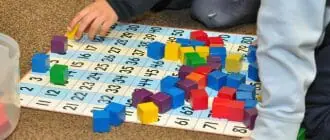
Save my name, email, and website in this browser for the next time I comment.
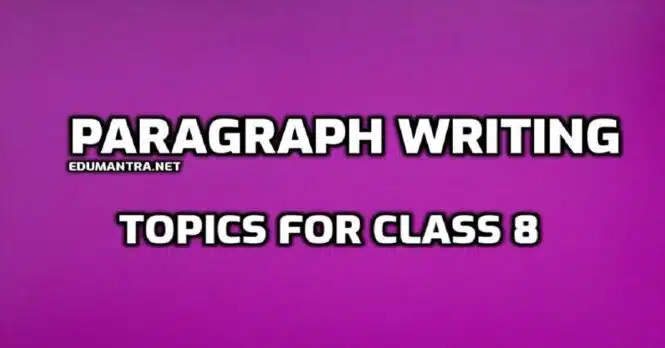
Creative Paragraph Writing Topics for Class 8
Dive into the world of creative expression with our curated collection of paragraph writing topics for Class 8. Designed to foster creativity and language development, these paragraph writing ideas and examples are the perfect stepping stone for young writers.
Table of Contents
Paragraph writing topics for class 8.
Crafting a Paragraph on “An Ideal Student”: Paragraph Writing Insights
When crafting a paragraph on “An Ideal Student” in paragraph writing, it’s essential to highlight the prime importance such a student places on education and studies. He is pure and simple in his habits. According to a philosopher, an ideal student should be alert and quick in mind like a crow.
He has the concentration of mind like a heron. He should not sleep much. He should be free from the worries of family and the worldly affairs. An ideal student tries to develop his personality in all fields. He is a good student as well as a player. He has great respect for his teachers, his parents and the elders in the society. A good student is not a book worm.
He takes part in games also. He remains away from strikes and other such activities. The attainment of knowledge is the only aim of an ideal student. He also keeps this aim before him. An ideal student has a sense of duty to society and the country. He takes part in social service and tries to uplift the poor and miserable People: Such a student builds a strong nation.
Download the above Paragraph in PDF (Printable)
2. Write a Paragraph in about 100-150 words on the following topic:-
Developing a Narrative: “How I Was Cheated Once” Paragraph Writing
Initiating the paragraph writing on “How I Was Cheated Once,” start with a setting, for instance, a day trip to Delhi. As I got off the bus at the Bus stand and was about to hire a taxi, a man approached. The man appeared to be well educated. He was very nicely dressed and was speaking fluent English.
It eared that he belonged to a good family. Lie looked very sad. He told me that he was going to Jalandhar but ie one had picked his pocket. He had no money for the bus fare. He requested me to give him sixty rupees the bus fare to Jalandhar.
He noted down my address and said that he would return the money within two wee days by money order. I took pity on him and gave him sixty rupees. The man thanked me greatly and t away towards the bus stand. I felt happy at having helped a man in need. After two days I was to come c.
I took a taxi from my uncle’s house and came to the bus stand. Suddenly I saw the same man talking to her man. I overheard their talk. This man was again requesting a person for money. He told him also that Pocket had been picked and he had no money for bus fare to Jalandhar. When I approached this cheat, he may. In this way, I was cheated.
3. Write a Paragraph in about 100-150 words on the following topic:-
Ans: Descriptive Paragraph Writing: “When I Caught a Pickpocket”
Begin the descriptive paragraph writing with a time frame and setting, such as a visit to Delhi last week to meet an uncle. In the evening we went to Connaught Place. Suddenly n cried that his pocket had been picked.
Someone had taken out his purse from his back pocket. I saw that n was running away. There was no doubt that he was the pick-pocket. I wrap after him. It was a time of traffic It was not easy to run after him on the busy roads of New Delhi.
But I did not lose courage. At one point, seemed to have been lost in the traffic. But I spotted him again because of his redshirt. At last, I caught him, Palika Bazar. In the meantime, a few other persons had gathered there.
The pick-pocket took out a knife to me. But the crowd which had gathered there over-powered him and handed him over to thee. The man whose pocket had been picked also came there. Ile thanked me greatly when I returned his to him.
4. Write a Paragraph in about 100-150 words on the following topic:-
Ans: Exploring the Topic: “Evils of Drinking” Paragraph Writing
In exploring the “Evils of Drinking” for paragraph writing, consider starting with a quote, like the one from Mahatma Gandhi on the ruinous effects of wine. Indeed, drinking of wine and other alcoholic drinks is a great evil. The life of a drunkard is ruined. He loses his self-respect and joys of life.
He does not take care of his family and children. Ile wastes all his money on wine. As a result, his family and children suffer. He cannot give proper food, clothes and education to his children.
In many cases, drinking of wine leads to quarrels and crime. Many crimes are committed under the effect of wine. Drinking is responsible for many accidents also. A drunken driver cannot control his vehicle properly. In short, drinking is a great evil. We should abstain our self from drinking.
5. Write a Paragraph in about 100-150 words on the following topic:-
Ans: City Life Narration: Creative Paragraph Writing on “Life in a Big City”
For a vivid portrayal in paragraph writing, depict the constant hustle and bustle of “Life in a Big City.. Life in a big city is busy and fast. People are always in a hurry. A big city is full of smoke, dust and noise.
The peace which we find in a village or a small town is absent in a big city. The poor people lead a miserable life in big cities. There are slums where people live in a bad condition.
There is also a crime in big cities and the lives of people are not much safe. There are many accidents because of the rush of traffic. But a big city has its attractions also. There are big buildings, cinema houses and markets. There are big and modern hospitals.
A person suffering from the disease can hope to get the best treatment. There are big schools and colleges where students can get all kinds of education. There are buses, taxis, cars and local trains to carry people from one place to the other in no time. Thus life in a big city has both it’s dark and bright sides.
6. Write a Paragraph in about 100-150 words on the following topic:-
Ans: Historical Exploration: Paragraph Writing on “A Visit to a Historical Place
Set the scene for paragraph writing by recounting a past visit to a historical place, like Agra, accompanied by a friend. We saw many buildings there. We went to see the Red Fort and the buildings at Fatehpur Sikri. But I was charmed by the beauty of the Taj Mahal. We saw the Taj in a full moon night.
This glorious building was shining beautifully. Inside the Taj, there are graves of Shah Jahan and his queen Mumtaz Mahal. Shah Jahan built this great. building in the memory of his queen. When he died, he was also buried in the Taj. This grand building stands on the bank of the river Yamuna.
The marble for the Taj Mahal was brought from Rajasthan. Every year a great number of tourists from all over the world come to see the Taj Mahal. The Agra City itself is not beautiful. The streets of the old city are narrow and dirty. But Agra is world-famous because of the Taj Mahal.
Education should be free to All
Education should be free to all because it is a fundamental human right. It is essential for the development of a fully functioning society and for the advancement of humanity. While some argue that education should not be free because it has value, or that free education would be a burden on taxpayers, the reality is that education is a public good that benefits everyone in society. Not only does education provide individuals with the skills and knowledge they need to participate in the workforce, but it also improves social cohesion and creates more productive citizens. In order to ensure that everyone has access to this fundamental human right, education should be free at all levels – from pre-primary to tertiary. Funding for education should come from general taxation so that everyone contributes, regardless of their ability to pay. This would create a level playing field and make sure that no one is left behind.
Students Should get Limited Access to the Internet?
In recent years, there has been a growing debate surrounding the use of the internet by students in schools. Some believe that students should have limited access to the internet in order to focus on their studies, while others argue that the internet can be a valuable tool for learning. There are pros and cons to both sides of the argument. Those who believe that students should have limited access to the internet argue that the internet can be a distraction from schoolwork. They also worry that students may come across inappropriate content online. On the other hand, those who believe that students should have full access to the internet argue that it can be a valuable resource for learning. They argue that students can use the internet to do research for projects and assignments, and that it can be a helpful tool for collaboration. Ultimately, the decision of whether or not to limit students’ access to the internet in schools is up to each individual school district. Some districts have chosen to block certain websites from being accessed on school computers, while others have decided to allow full access. There is no right or wrong answer, and each district must decide what is best for its own students.
Main Cause of Pollution is Urbanization
Urbanization is the main cause of pollution in India. Rapid industrialization and urbanization have led to increased pollution levels in the country. Urban areas in India are home to a large number of industries that release a variety of pollutants into the environment. These pollutants include air pollutants, water pollutants, and noise pollution.The main sources of air pollution in urban areas are vehicles, industries, and power plants. Vehicle emissions contain a variety of harmful gases and particles that contribute to air pollution. Industries release a variety of pollutants into the air, including particulate matter, sulfur dioxide, nitrogen oxides, and carbon monoxide. Power plants emit large amounts of carbon dioxide and other greenhouse gases that contribute to climate change.Water pollution is another major problem in urban areas of India. Industrial effluent containing harmful chemicals is often released into waterways. This can contaminate drinking water supplies and cause health problems for people who come into contact with the contaminated water. Stormwater runoff from urban areas can also pollute waterways, carrying pollutants such as oil, pesticides, and heavy metals into lakes, rivers, and streams.Noise pollution is another type of pollution that is common in urban areas. Noise pollution can come from a variety of sources, including traffic, construction activity, and industrial facilities. Noise pollution can cause a range of health problems, including sleep disturbance, hearing loss, and cardiovascular disease.
Tobacco a Curse to the Society
Tobacco is one of the most common addictions in the world, and it is also one of the most harmful. Tobacco use can cause cancer, heart disease, and other health problems. It is also a leading cause of death. Every year, tobacco use kills more than 8 million people around the world. In the United States, tobacco use kills more than 480,000 people each year.Tobacco use costs the United States more than $300 billion each year in medical expenses and lost productivity. Tobacco use is a major contributor to poverty and inequality. It disproportionately affects low-income communities and communities of color.Tobacco use is not just a problem for individuals and families—it’s a problem for society as a whole. It takes a toll on our economy, our environment, and our public health. We all pay the price for tobacco use, in one way or another.If we want to create a healthier, more equitable world, we need to address the global tobacco epidemic. We need to do everything we can to reduce tobacco demand and supply. This means investing in prevention and cessation programs, supporting tobacco farmers to transition to other crops, and ratifying the WHO Framework Convention on Tobacco Control.It’s time to end the global tobacco epidemic. Join us in taking action to make this happen.
Smoking in Public Places should be Banned
Smoking in public places should be banned to protect non-smokers from the harmful effects of second-hand smoke. Second-hand smoke is the smoke that comes from the burning end of a cigarette, pipe, or cigar, as well as the smoke exhaled by a smoker. It contains more than 4,000 chemicals, including over 50 known to cause cancer.There is no safe level of exposure to second-hand smoke, and even brief exposure can be harmful. Nonsmokers who are exposed to second-hand smoke are at an increased risk for developing lung cancer, heart disease, and other health problems.Bans on smoking in public places are effective in reducing exposure to second-hand smoke and protecting nonsmokers from its harmful health effects. Such bans have been shown to reduce the prevalence of smoking, especially among young people.Smoking bans in public places are also good for businesses. Studies have shown that smoking bans result in increased business for restaurants and bars. Nonsmokers are more likely to patronize businesses that are smoke-free, and employees are more productive in smoke-free workplaces.
Advantages and Disadvantages of Social Media
The advantages and disadvantages of social media are both well-known. site On the one hand, social media provides users with a platform to connect with friends and family, share news and experiences, and stay up-to-date on current events. On the other hand, social media can be a breeding ground for cyberbullying, online harassment, and other forms of negative online interactions.The advantages of social media are evident in its ability to connect people from all over the world. With just a few clicks, users can communicate with friends and family who live in different countries. For many people, social media has become an essential part of their daily lives. Social media has also made it easier for people to share their experiences and connect with others who have similar interests.The disadvantages of social media are just as well-known as the advantages. Social media can be a breeding ground for cyberbullying, online harassment, and other forms of negative online interactions. In addition, social media can be addictive and time-consuming, which can lead to difficulties in maintaining real-world relationships.
Essay on Mobile Phone
With the technological advances that have happened in the past few years, it’s no wonder that more and more people are using mobile phones. While there are many advantages to using a mobile phone, there are also some disadvantages. Here is a look at both sides of the argument.Advantages:1. Mobile phones are very convenient. They allow you to stay connected with family and friends no matter where you are.2. They can also be a great way to stay connected with work. You can check your email, make calls, and even do some work while you’re on the go.3. Mobile phones are also a great way to entertain yourself. You can play games, listen to music, and watch videos on your phone.4. They can be a lifesaver in an emergency situation. If you need to call 911, your mobile phone will be a valuable tool.Disadvantages:1. Mobile phones can be very distracting. It’s important to be aware of your surroundings and not let your phone consume all of your attention.2. They can also be a drain on your battery life. If you’re not careful, you can find yourself with a dead phone in just a few hours.3. Mobile phones can also be expensive. If you’re not careful, you can end up spending a lot of money on your phone bill each month.
Essay on Internet
In the 21st century, the internet has become an essential part of everyday life. It is used for a variety of purposes, including communication, research, and entertainment.There are many advantages to using the internet. It is a quick and easy way to communicate with friends and family all over the world. It is also a great resource for research on any topic. You can find information on just about anything you can think of. In addition, there are a variety of entertainment options available online, such as streaming music and movies, playing games, and so much more.While there are many positives to using the internet, there are also some disadvantages. One of the biggest dangers of the internet is cybercrime. This can include identity theft, viruses, and other malicious software. Another downside to using the internet is that it can be addicting. It is easy to spend hours upon hours browsing websites without even realizing it. This can lead to wasted time and decreased productivity.Despite its potential dangers, the internet is still a great tool that can be used for a variety of purposes. Just be sure to use it safely and responsibly.
Essay on Newspaper
A newspaper is a publication that contains news, articles, and advertisements. It is usually printed on paper and distributed to subscribers. Newspapers have been around for centuries and they play an important role in our lives.Newspapers provide us with news and information about what is happening in the world around us. They keep us up-to-date on current events and help us to form our opinions about the issues of the day. In addition, newspapers also provide a forum for discussion and debate on the issues of the day.Newspapers are an important part of our democracy. They provide us with the information we need to make informed decisions about the issues that affect our lives. They also hold our leaders accountable for their actions and give us a platform to express our views on the issues of the day.So, if you are looking for an essay on newspaper, then you have come to the right place. In this article, we will discuss the importance of newspapers in our lives and why you should consider writing an essay on this topic.
Essay on Science
Science is a systematic and logical approach to discovering how things in the universe work. It is much more than a body of knowledge; it is a way of thinking. A scientific approach to thinking can be applied to any question, whether it is about the natural world or the human world.The scientific method is a way of thinking that helps us to understand the world around us. It is based on observation and experimentation. The scientific method is not just for scientists; it can be used by anyone who wants to understand how something works.There are many different types of science. The type of science that someone chooses to study depends on their interests and what they want to learn about the world. Some common types of science are biology, chemistry, physics, and earth science.
Summer Vacation Essay
I can still remember the summer vacations of my childhood. Every year, my family and I would pack up our car and drive to the beach. We would spend lazy days lounging on the sand, swimming in the ocean, and exploring the local area. Those were some of the best times of my life.Now that I’m an adult, I don’t get to go on summer vacation as often as I’d like. But when I do have the chance to travel, I always make sure to take advantage of it. After all, there’s nothing quite like spending a few weeks in the sun, surrounded by friends and family.If you’re lucky enough to have a summer vacation coming up, make sure to enjoy every minute of it. Trust me, you’ll be glad you did!
Swachh Bharat Abhiyan
Swachh Bharat Abhiyan is a campaign launched by the Government of India to promote cleanliness and sanitation across the country. The main aim of this campaign is to make India clean and green by 2019, the 150th birth anniversary of Mahatma Gandhi. This initiative was started by Prime Minister Narendra Modi on 2nd October, 2014 at Rajghat, New Delhi. Swachh Bharat Abhiyan is a nationwide campaign that covers 4041 statutory towns with a population of over 100,000 people.The objectives of Swachh Bharat Abhiyan are to:1. Eliminate open defecation from India by 20192. Convert insanitary toilets into pour flush toilets3. Eradicate manual scavenging4. Enable private sector participation in sanitation5. Create awareness about sanitation and cleanliness6. Generate community involvement in sanitation
Usage of Technology in Education
Technology has been a great boon to education. It has made learning more interactive and fun. It has also made it possible for students to get more out of their education. Here are some ways in which technology is being used in education:Interactive Learning: Technology has made learning more interactive. Students can now use computers and other devices to learn new concepts and practice what they have learnt. This makes learning more fun and engaging.Assessment and Feedback: Technology has also made assessment and feedback more efficient. Teachers can now use various tools to assess student performance and give feedback instantly. This helps students to improve their learning quickly.Personalized Learning: Technology is also being used to personalize learning for each student. With the help of data analytics, teachers can identify the strengths and weaknesses of each student and design customized learning plans accordingly. This ensures that every student gets the best out of his or her education. distance learning: One of the most important uses of technology in education is distance learning. With the help of technology, students can now access educational resources from anywhere in the world. This has made education more inclusive and accessible.
APJ Abdul Kalam
Dr. A.P.J. Abdul Kalam, popularly known as the Missile Man of India, was the 11th President of our country. He was born on 15th October 1931 in a small village in Tamil Nadu. His father was a boatman and his mother was a housewife. He completed his schooling from Ramanathapuram Schwartz Matriculation School and then went on to study at Saint Joseph’s College, Tiruchirappalli. In 1955, he graduated from Madras Institute of Technology with a degree in Aeronautical Engineering.He started his career as a scientist at the Defence Research and Development Laboratory (DRDL) in Hyderabad. He later joined the Indian Space Research Organisation (ISRO) where he worked on the development of launch vehicles for India’s space programme. He made significant contributions to the development of the Polar Satellite Launch Vehicle (PSLV) and the Agni missile programme. He also played a key role in the 1998 Pokhran nuclear tests.In 2002, he was elected as the 11th President of India and served for five years until 2007. During his tenure, he worked towards strengthening India’s relations with other countries and promoting scientific development in the country. He was also instrumental in establishing the Indian Institutes of Technology in Gandhinagar and Hyderabad.Kalam was a man of simple tastes and believed in leading a modest lifestyle. He was an avid reader and loved music and sports.
Swami Vivekananda
Swami Vivekananda was one of the most influential spiritual leaders of the nineteenth century. He was the principal figure in the introduction of Hinduism in the West and is considered one of the most important figures in the history of modern India.Born in Calcutta on 12th January 1863, Vivekananda was a brilliant student and was deeply interested in philosophy and religion from a young age. After his graduation, he became a disciple of Ramakrishna Paramahamsa, a well-known mystic and religious teacher. Ramakrishna had a profound impact on Vivekananda’s life and thought, and after his death in 1886, Vivekananda became one of his chief disciples and propagators.In 1893, Vivekananda represented India at the Parliament of the World’s Religions in Chicago. His speech there, which began with the now famous words “Sisters and brothers of America”, was a sensation and made him an overnight celebrity. Vivekananda went on to tour America and Europe, delivering lectures and writing articles and books about Hinduism. He also established the Vedanta Society, which promoted the study of Hinduism in the West.Vivekananda returned to India in 1897, and spent the next few years travelling across the country, preaching his message of religious tolerance and spiritual upliftment. In 1902, he founded the Ramakrishna Mission, a charitable organisation dedicated to social service and religious education.
Sardar Vallabhbhai Patel
Sardar Vallabhbhai Patel was an Indian independence activist and one of the founding fathers of the Republic of India. He is also considered as the “Iron Man of India” for his strong leadership during the country’s struggle for independence. After serving as the first Deputy Prime Minister of India, he went on to become the Home Minister, a position he held until his death in 1950.Patel was born into a poor peasant family in Gujarat and educated in Gujarati and English. He worked as a lawyer in Ahmedabad before joining the Indian National Congress (INC) in 1920. He became a prominent leader of the INC and played a leading role in the Quit India Movement of 1942.Patel was one of the principal architects of the Indian Constitution and is credited with unifying the 562 princely states into a single Union of India. He also played a key role in the integration of the armed forces of the princely states into the Indian Army.Patel died at his home in Bombay (now Mumbai) on 15 December 1950 at the age of 75. His body was cremated at Sardar Smarak, a memorial dedicated to him in Ahmedabad.
Abraham Lincoln
Abraham Lincoln was born on February 12, 1809, in Hardin County, Kentucky. His parents were Thomas Lincoln and Nancy Hanks. When Abraham was seven years old, his family moved to Indiana. Thomas Lincoln bought a farm there. The family had a good life on the farm, but when Abraham was nine years old, his mother died of milk sickness.In 1818, Thomas Lincoln married a woman named Sarah Bush Johnston. She had three children of her own. Sarah was a good stepmother to Abraham and his sister, Sarah. The family moved to Illinois in 1830.Abraham did not go to school very much, but he read a lot. He became interested in politics and law. In 1832, he ran for the Illinois state legislature. He lost the election, but he ran again in 1834 and won.Lincoln became a lawyer in 1837. He married Mary Todd in 1842. They had four children, but only one survived to adulthood.In 1854, Lincoln opposed the Kansas-Nebraska Act. This law would have allowed slavery in those states. Lincoln gave a speech against the act that made him famous all over the country.In 1860, Abraham Lincoln was nominated for president by the Republican Party. He won the election and became the 16th president of the United States. He was inaugurated on March 4, 1861.On April 12, 1861, Confederates attacked Fort Sum.
Republic Day
The Republic Day is celebrated every year on 26th January to mark the day when the Constitution of India came into force. The main event is held in the national capital, New Delhi, where the President of India unfurls the national flag at the Red Fort. A grand parade is also held at Rajpath, which is attended by dignitaries and people from all walks of life.Republic Day is a national holiday in India. It is a day to remember when our country became a republic and to celebrate the democratic values that we all hold dear. On this day, we remember the sacrifices of those who fought for our freedom and for the rights of all citizens. We also reaffirm our commitment to build an inclusive and prosperous India for all.Let us all pledge to build an India that is strong, prosperous and united!
Importance of Trees
Trees are integral to the health of our planet. They help clean the air we breathe, filter the water we drink, and provide habitat for countless species of plants and animals. They also play a vital role in stabilizing the climate.Deforestation—the permanent removal of forests—is a major threat to the health of our planet. It is estimated that we are losing 18.7 million acres (7.6 million hectares) of forests each year—an area the size of Panama. This deforestation has devastating consequences for both wildlife and humans.Wildlife:Forests provide habitat for an estimated 80% of the world’s terrestrial biodiversity—including many endangered and threatened species. As forests are cleared, these species lose their homes and are increasingly at risk of extinction.Humans:Forests play a vital role in stabilizing the global climate—they help regulate temperature and precipitation patterns. Deforestation contributes to climate change by releasing greenhouse gases into the atmosphere. This disturbs the Earth’s delicate climate balance and can lead to more extreme weather conditions, including floods, droughts, and hurricanes.
Winter Season
As the coldest season of the year, winter is characterized by falling temperatures and shorter days. In addition to the weather changes, the winter season also brings with it a change in the natural world, as plants and animals enter into a state of dormancy. For many people, the winter season is a time to enjoy the outdoors with activities such as skiing, snowboarding, and ice skating. It is also a time to cozy up indoors with hot drinks and comfort food.Whether you love or hate the winter season, there is no denying that it is a unique time of year. In this winter season essay, we will discuss the various aspects of winter, including the weather, the wildlife, and the activities that people enjoy during this time of year.
Write a Paragraph in about 100-150 words on the following topic:-
Ans: WATCHING A CRICKET MATCH ON T.V. SCREEN.
Cricket has become a very popular game in our country. I am also fond of cricket. Recently I watched the one-day cricket match between India and Pakistan for the World Cup. I remained sitting before the T.V. set for the whole day, watching the match. It is joyful to watch a cricket match on the T.V. screen. Three of my friends also came to my house. We four friends watched the cricket match together. It is a pleasure to see a cricket match along with our friends. We can gossip while watching the game. We can share our joy when the Indian team plays well. The match between Pakistan and India was very interesting. India won the match by their superior batting and bowling. Dhoni, Sachin Tendulkar and Gautam Gambhir batted well. But it was the bowling of Harbhajan and Shri Kant which brought us victory.
12. Write a Paragraph in about 100-150 words on the following topic:-
Ans: HELPING THE FLOOD AFFECTED PEOPLE
Last year, there were wide-spread floods in Haryana. Many areas were completely submerged in water. A great number of people became homeless. Their crops and houses were destroyed. There was a huge loss of life and property. Many water-borne diseases were spread. However, many good people helped the victims of floods. A number of organizations came to the help of the flood-affected people. A number of camps were organised. Here, people were given free food, shelter and medicines. Some teams of doctors went from village to village and distributed free medicines. Some people were trapped in their village. The government dropped food packets to them from helicopters. Some marooned people were saved with the help of boats.
Ans:- MY VISIT TO AN INTERNATIONAL TRADE FAIR
Every year, an International Trade Fair is held in Delhi. Last year I also visited the International Trade Fair. It was held at the Pragati Maidan in New Delhi. I went with our school tour. We made our entry from Gate No. I and went inside. There was a lot of rush. Thousands of people and school and college students had come to visit this trade fair. Nearly all the states of India had set up their pavilions. These pavilions highlighted the industrial development achieved by each state. Apart from the industrial and technical progress, these pavilions gave a glimpse of the cultural life of these states. Many countries of the world also took part in it. They had put their stalls in a big building called ‘The Hall of Nations’. The main attractions of the fair were electronic goods.
8. Write a Paragraph in about 100-150 words on the following topic:-
Ans: MY VISIT TO THE WORLD BOOK FAIR
Books are the true friend and guide of man. They give us the wisdom of different ages. Last month the World Book Fair was held at New Delhi. I also visited this Book Fair. The Fair was held at Pragati Maidan. Leading publishers of India took part in this fair. Publishers from some other countries had also put up their stalls in the fair. There were books on all kinds, for example, literature, science, politics, economics, military science, and self-improvement and on general topics. There was a separate stall for a religious book. It was joyful to see books on different topics in one place. At some stalls, there were attractive free gifts for those who purchased books for more than two hundred rupees. I purchased many books on literature and general knowledge. In the evening I came back home.
Ans: KNOWLEDGE IS POWER
Gone are the days when might was right. There is no doubt that a man who is physically strong and whose purse is full, commands power over others. But the power of knowledge is greater. A man of knowledge can overcome even wealthy persons. Knowledge enables man to discriminate between right and wrong, between good and bad. It enables man to face dangers and difficulties with courage and confidence. It gives him mental, moral and spiritual advancement. In the past man lived in caves in the jungles. He was afraid of animals. But as he gained knowledge, he gained mastery over nature. He gained mastery over wild beasts. Today he can control the forces of nature. .He has landed on the moon. Nothing remains unknown to him. He has become a great scientist, a noble artist and a mighty creator of things. Advancement of civilization and culture would be impossible without knowledge. Thus, knowledge is power.
Ans: MY VISIT TO A ZOO
Last Sunday, I happened to visit Delhi. There I went to see the Zoo. I went there with my uncle. The zoo in Delhi is one of the biggest zoos in Asia. It is situated near the old Fort. As we entered the zoo, first of all, we saw birds. There were many kinds of birds. Some of them were very beautiful and rare. In the beginning, there were water birds and then other kinds of birds. We saw ducks, geese, swans, parrots, cranes, herons, peacocks and many other birds. Then we saw the wild beasts. We saw lions, tigers, rhinos, bears and wolves. We enjoyed an elephant ride also. In a big pond, there were hippos also. Their big mouths were fearful to look at. There is a separate enclosure for snakes. Some of these snakes looked fearful. We also saw huge crocodiles and alligators. We came back in the evening.
10. Write a Paragraph in about 100-150 words on the following topic:-
Ans: TRAVELLING IN AN OVERCROWDED BUS
It was a summer afternoon. I had to go to Sirsa from Jind. When I reached the bus stand, there was no bus for Sirsa. A number of passengers were waiting for the bus. Then the bus came. It was already packed to capacity. As I was in a hurry, I did not wait for another bus. People rushed into the bus. I too joined them. After a lot of pushing and efforts, I was able to get on the bus. But I was squeezed by passengers from all sides. I felt suffocation on the bus. It was very hot inside. I thought of leaving this bus and waiting for the other. But now it was impossible to move even an inch. The passengers felt some relief when the bus started. On the way, the conductor took more passengers. After two hours, the bus reached Hisar. Then the rush of passengers inside the bus became less. But still, I could not get a seat and had to remain standing. At last, the bus reached Sirsa, I thanked God and got off the bus.
- Try for free
Eighth Grade Creative Writing Worksheets

- Who Am I? – Character Description
- Scoring Rubric: Poetry
- Story Starters
- Student Proofreading Checklist
- Creative Writing with Photo Inspiration
- The Middle Ages: The Feudal System Activity Packet
- Writing a Character Sketch
- Scoring Rubric: Research Report/Paper
- Be a Journalist!
- Poetry Terms Quiz
- An Immigrant's Story
- The Middle Ages: Knights and Knighthood Activity Packet
- The Middle Ages: Medieval Towns Activity Packet
- The "I Remember" Poem
- Scoring Rubric: Literary Analysis/Interpretation
- Really Good: Producing Synonyms
- The Peanuts Gang: Charles Schulz
- Life's Not Always Fair
- Scoring Rubric: Fictional Narrative
- Denotation/Connotation
- My New Year's Resolutions (7-12)
- Scoring Rubric: Cause-Effect
- Risking It All for a Friend
- Building a Buddy
- Great Teacher
- Scoring Rubric: Problem-Solution
- Scoring Rubric: Critical Review
- Where Are the Wild Things: Maurice Sendak
- License Plate Quickies: Writing a Paragraph
- The Final Shot
- More Creative Writing Printables, 8th Grade
Featured Middle School Resources

Related Resources
About the author.

TeacherVision Editorial Staff
The TeacherVision editorial team is comprised of teachers, experts, and content professionals dedicated to bringing you the most accurate and relevant information in the teaching space.

Free Printable Creative Writing Worksheets for 8th Grade
Creative Writing: Discover a vast collection of free printable Reading & Writing worksheets, tailored for Grade 8 students, to enhance their skills and unleash their imagination. Empower your teaching with Quizizz resources!

Explore Creative Writing Worksheets by Grades
- kindergarten
Explore Other Subject Worksheets for grade 8
- Social studies
- Social emotional
- Foreign language
- Reading & Writing
Explore printable Creative Writing worksheets for 8th Grade
Creative Writing worksheets for Grade 8 are an essential tool for teachers who want to engage their students in the world of reading and writing. These worksheets provide a structured and organized approach to developing essential skills in fiction writing, allowing students to explore their creativity and imagination. By incorporating a variety of activities, such as brainstorming, story mapping, and character development, these worksheets help students build a strong foundation in narrative writing. Additionally, they encourage students to analyze and critique their own work, as well as the work of their peers, fostering a deeper understanding of the writing process. With the help of these Creative Writing worksheets for Grade 8, teachers can create a dynamic and engaging learning environment that nurtures a love for reading and writing in their students.
Quizizz is an innovative platform that offers a wide range of resources, including Creative Writing worksheets for Grade 8, to help teachers enhance their students' learning experience. This interactive platform allows teachers to create quizzes, polls, and other activities that can be easily integrated into their lesson plans. With Quizizz, students can engage in real-time competitions, collaborate on group projects, and receive instant feedback on their performance. This not only makes learning more enjoyable but also helps students develop essential skills in reading, writing, and critical thinking. Furthermore, Quizizz offers a vast library of pre-made quizzes and worksheets, covering various topics such as fiction writing, grammar, and vocabulary, which can be easily customized to suit the needs of individual students. By incorporating Quizizz into their teaching strategies, teachers can provide a fun and interactive learning experience that fosters a love for reading and writing in Grade 8 students.

Middle School Inspiration: Writing Topics for 8th Graders
My name is Debbie, and I am passionate about developing a love for the written word and planting a seed that will grow into a powerful voice that can inspire many.
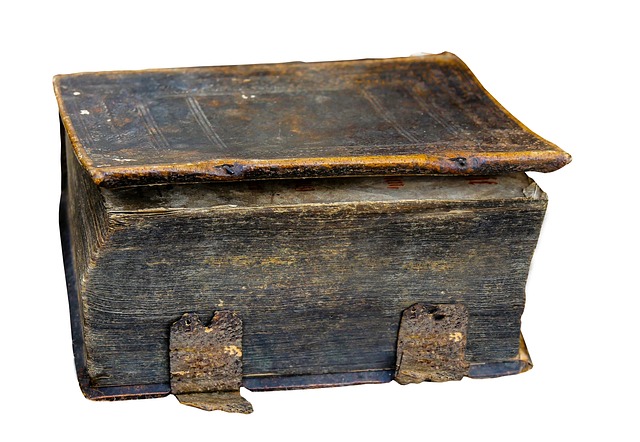
1. Unlocking the Creative Minds: Exploring Engaging Writing Prompts for 8th Graders
Unleashing imagination:, exploring real-life scenarios:, 2. finding your voice: inspiring personal narrative topics for middle school writers, 3. fueling imagination: captivating fiction writing ideas to ignite 8th graders’ stories, 4. nurturing empathy: thought-provoking persuasive essay topics for middle school students, 5. from past to present: uncovering historical events for expository writing in 8th grade, 6. current issues, fresh perspectives: exploring argumentative writing topics for middle schoolers, 7. let’s get descriptive: inspiring poetry and descriptive writing topics for 8th grade, 8. a world of discovery: exciting research-based writing topics for middle school explorers, frequently asked questions, final thoughts.
In the realm of 8th-grade education, nurturing creativity and developing strong writing skills go hand in hand. Engaging writing prompts are a powerful tool to unlock the creative minds of young students, igniting their imagination and fostering a love for writing. In this section, we will explore a plethora of vibrant and thought-provoking writing prompts specifically tailored for 8th graders, designed to inspire and captivate their writing endeavors.
Imagination is the key to limitless possibilities, and these writing prompts are sure to tap into the boundless creativity of 8th graders:
- Creating a New World: Imagine an alternate reality where the laws of physics are completely different. Describe this unique world, its inhabitants, and the extraordinary adventures that unfold.
- Ancient Mysteries: Transport yourself back in time to visit a mysterious ancient civilization. Describe the sights, sounds, and culture you encounter, unraveling the secrets of a long-lost civilization.
- The Time Traveler’s Dilemma: You stumble upon a time machine that can only take you to one specific moment in history. Which historical event would you choose to witness and why? Describe your experience and its impact on you.
Reality can be just as fascinating as fiction. These writing prompts prompt 8th graders to reflect on relatable real-life situations:
- Future Legacy: Imagine yourself 20 years from now. Write a letter to your present self, detailing your accomplishments, aspirations, and the challenges you overcame. Reflect on the person you have become.
- Stepping into Someone Else’s Shoes: Select a historical figure or a fictional character. Write a first-person narrative, imagining yourself as that person. Dive into their thoughts, emotions, and experiences to bring their story to life.
- Environmental Crusaders: Describe an innovative solution to a current environmental issue that can help save our planet. Explain how this solution can impact the world positively and inspire others to take action.

When it comes to finding your voice as a middle school writer, it’s essential to choose topics that inspire you and bring out your unique perspective. Personal narratives allow you to express your thoughts, feelings, and experiences in a way that captivates your readers. Here are some inspiring topics to get you started:
- The most memorable day of my life: A time when something extraordinary happened.
- A person who has had a significant impact on me: How someone’s presence has influenced your life.
- Overcoming a challenge: Reflecting on a difficult situation and the lessons you learned.
- My favorite place on earth: Describing a spot that holds special meaning to you and why.
- An unexpected adventure: Recounting an unplanned journey full of excitement and discovery.
Remember, your personal narrative should be infused with your authentic voice. Let your personality shine through and engage your readers by being honest and relatable. Use descriptive language, specific details, and **emotions** to make your story come alive. Don’t shy away from sharing your personal thoughts and reflections; this is what will make your narrative meaningful and unique. So, go ahead and explore these topics or take inspiration from them to find your own voice as a middle school writer!
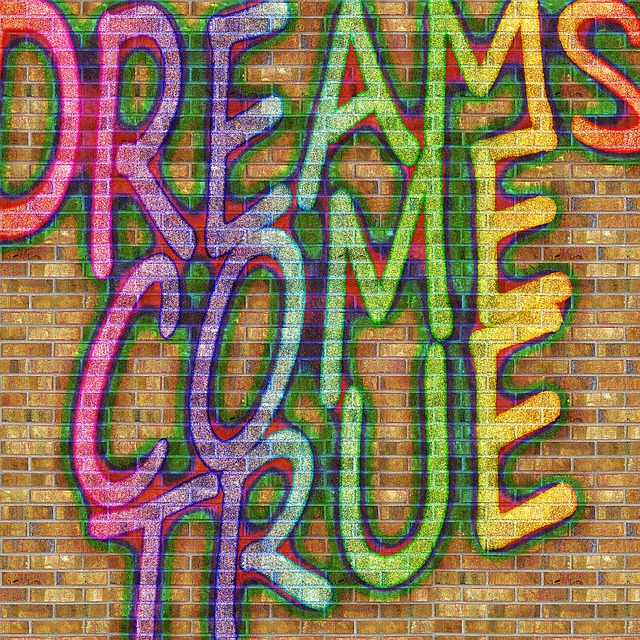
Are you an 8th-grade student bursting with creative energy? Look no further! We have curated a list of captivating fiction writing ideas that will fire up your imagination and help you craft compelling stories. Let your creativity take flight as you explore these exciting prompts.
1. Mysterious Objects: Imagine stumbling upon a peculiar object that possesses extraordinary powers. Delve into the story behind this enchanted item and weave an adventure filled with suspense and unexpected twists. Who discovered it first? What is its significance? Let your imagination run wild!
2. Parallel Universes: Step into a world where everything you know is turned upside down. Craft a story where a parallel universe exists alongside ours, allowing for incredible adventures and the encounter of alternate versions of yourself or others. Will you befriend or battle these counterparts? Explore the endless possibilities!

When it comes to developing empathy in middle school students, nothing beats thought-provoking persuasive essay topics. These assignments provide an excellent opportunity for students to explore different perspectives, challenge their own beliefs, and understand the experiences of others. By delving deep into these topics, students can learn to value the importance of empathy and develop skills that will benefit them throughout their lives.
Here are some compelling persuasive essay topics that can encourage middle school students to think critically about empathy:
- Should schools implement empathy training programs to promote understanding and compassion among students?
- Is it important to consider the emotions and feelings of animals when making decisions about their treatment?
- Should students be required to perform community service to enhance their understanding of other people’s struggles?
- Can empathy play a crucial role in reducing bullying in schools?
- Should the media be more responsible in portraying diverse cultures and experiences to foster empathy?
These topics offer a platform for students to express their opinions and engage in meaningful discussions. By presenting a variety of perspectives and challenging students to support their arguments with evidence, not only do these persuasive essay topics nurture empathy, but they also enhance critical thinking skills and encourage open-mindedness.

In the 8th grade, students embark on an exciting journey to explore and uncover historical events through the art of expository writing. With a focus on connecting the past to the present, this unit encourages students to dive deep into the annals of history, fostering critical thinking skills, and enhancing their ability to communicate effectively.
During this unit, students will engage in a multitude of activities, including:
- Researching and selecting a historical event of their choice
- Reading primary and secondary sources to gather reliable information
- Analyzing different perspectives to understand the event from multiple angles
- Identifying cause-and-effect relationships to comprehend the impact of the event on society
Furthermore, students will learn to organize their thoughts coherently, ensuring a seamless flow of information in their expository essays. They will master the art of crafting clear and concise thesis statements, supporting their arguments with well-researched evidence, and developing compelling conclusions that tie the past to the present.

Encouraging middle schoolers to develop their argumentative writing skills is a powerful way to foster critical thinking and engage them in meaningful discussions. By presenting a range of current issues, we provide young minds with opportunities to explore various viewpoints, form their own opinions, and strengthen their persuasive abilities. In this section, we have curated a selection of thought-provoking topics that will challenge middle schoolers to think critically and articulate their ideas effectively.
- The Impact of Social Media: Discuss the positive and negative effects of social media on young people’s lives, focusing on topics such as cyberbullying, addiction, and the potential impact on mental health.
- School Uniforms: Explore the reasons why some schools enforce uniforms, while others do not. Debate the advantages and disadvantages of having a standardized dress code in educational institutions.
- Animal Testing: Engage in a conversation about the ethical considerations of using animals for scientific research, alternative methods, and the potential benefits or drawbacks of this controversial practice.
Middle schoolers are encouraged to choose topics that resonate with them personally, allowing them to connect and voice their opinions authentically. By diving into these current issues, students will not only enhance their writing skills but also develop empathy, critical thinking, and the ability to build arguments supported by sound evidence. By engaging in these conversations, we empower our young learners to become active participants in shaping the world around them.

In the 8th grade, students are encouraged to explore their creativity and expand their writing skills through descriptive writing and poetry. This not only helps them develop their vocabulary and language proficiency but also allows them to express their thoughts and emotions in a vivid and engaging manner. Here are some inspiring and exciting topics that can be explored in 8th-grade classrooms:
1. Imaginative Landscapes: Encourage students to imagine and describe their own dream landscapes. They can transport their readers to enchanted forests, bustling cities in the clouds, or even underwater kingdoms. Encourage the use of sensory details and descriptive language to bring these settings to life.
2. Unique Characters: Students can create fascinating characters by focusing on their appearance, personality traits, and backstory. Promote the use of figurative language such as similes and metaphors to make their descriptions more impactful. Encourage them to delve into their characters’ emotions and motivations to make them more relatable to readers.
3. Personal Narratives: Students can reflect on significant moments or experiences in their lives and craft descriptive narratives around them. It could be an unforgettable vacation, a challenging life event, or a memorable friendship. Encourage them to incorporate sensory details, dialogue, and introspection to make their narratives more engaging.
4. Powerful Emotions: Poetry is a wonderful medium for expressing intense emotions. Encourage students to write about joy, sadness, fear, or any other feeling that resonates with them. They can experiment with different poetic devices like imagery, alliteration, and repetition to evoke powerful emotions in their readers.
5. Nature’s Beauty: Inspire students to step outside and observe the beauty of nature around them. They can describe the captivating colors of a sunset, the gentle rustle of leaves in a forest, or the fragrance of blooming flowers. Encourage them to capture these moments using similes, personification, or even writing in free verse.

Encourage the curious minds of middle school explorers by introducing them to a world of thrilling research-based writing topics. With endless possibilities, these topics will not only ignite their imagination but also help them develop crucial academic and critical thinking skills. Whether it’s unraveling mysteries or diving into fascinating historical events, here are a few enticing topics that will inspire young writers to embark on their own journeys of discovery:
- The Secrets of Ancient Civilizations: Transport your readers back in time as they dig deep into the mysteries of ancient civilizations like the Aztecs, Egyptians, or Incas. Unravel the secrets of their impressive architectural feats, religious rituals, or enigmatic hieroglyphics.
- Exploring the Wonders of Space: Take your audience on an interstellar adventure as they explore celestial bodies, ponder the existence of extraterrestrial life, or dive into the mind-boggling phenomena of black holes and supernovas.
- Uncovering Nature’s Hidden Gems: Immerse your readers in the captivating world of nature by investigating the intricate behaviors of animals, the marvels of evolution, or the delicate balance of ecosystems.
With these research-based writing topics, middle schoolers will flex their intellectual muscles while discovering the hidden wonders and untold stories of our world. Encourage them to dive deep, think critically, and become the explorers of knowledge. Who knows what remarkable discoveries lie ahead on their literary journeys?
Q: Why is it important to inspire 8th graders in their writing?
A: Inspiring 8th graders in their writing is crucial because it helps them develop strong communication skills, creativity, and critical thinking abilities. Writing can boost their self-confidence, allowing them to express their thoughts and ideas effectively.
Q: What are some writing topics that can inspire 8th graders?
A: There are various writing topics that can inspire 8th graders. Here are a few examples: 1. Personal Narrative – Encourage students to share a significant personal experience and reflect upon its impact on their lives. 2. Persuasive Essay – Help students explore controversial topics and challenge their peers’ perspectives, fostering critical thinking skills. 3. Creative Fiction – Encourage students to use their imagination to create engaging stories, exploring different genres such as mystery, fantasy, or science fiction. 4. Research Essay – Motivate students to delve into topics of interest, encouraging them to conduct thorough research and present well-supported arguments.
Q: How can teachers inspire 8th graders to write about personal experiences?
A: Teachers can inspire 8th graders to write about personal experiences by creating a safe and supportive environment where students feel comfortable sharing their thoughts and emotions. Encourage them to reflect on important events, friendships, or challenges they have faced. This can help students develop their writing voice and make their writing more relatable.
Q: How can teachers help 8th graders improve their persuasive writing skills ?
A: To help 8th graders improve their persuasive writing skills, teachers can implement various strategies. Firstly, guide students in understanding the structure and components of persuasive essays. Provide examples and encourage students to identify persuasive techniques used in different texts. Additionally, prompt them to research and gather evidence to support their claims and arguments. Peer feedback and class discussions are also effective tools to enhance their persuasive writing skills.
Q: How can teachers encourage creativity in 8th graders’ fiction writing?
A: To encourage creativity in 8th graders’ fiction writing, teachers should allow students to freely explore their imagination. Implement writing exercises that encourage them to think outside the box, such as writing prompts or story starters. Encourage creative storytelling techniques like incorporating descriptive language, developing interesting characters, or creating unique plot twists. Provide opportunities for students to share and receive feedback, fostering a supportive environment for their creativity to flourish.
Q: How can teachers guide 8th graders in writing a strong research essay?
A: Guiding 8th graders in writing a strong research essay involves teaching them the necessary research and analytical skills. Teachers can explain the process of conducting research, including credible sources and effective note-taking techniques. Emphasize the importance of organizing their thoughts and arguments before starting to write. Teach the students how to effectively integrate research evidence into their writing and how to properly cite their sources. Additionally, provide guidance on how to structure and format their research essays, ensuring clarity and coherence.
Q: Why is it essential to provide a supportive environment for 8th grade writers?
A: Providing a supportive environment for 8th grade writers is essential as it boosts their confidence and encourages risk-taking in their writing. By nurturing a safe and non-judgmental space, students feel comfortable sharing their ideas and voices. This supportive atmosphere fosters creativity, critical thinking, and growth as writers. Additionally, constructive feedback from both the teacher and peers helps students improve their writing skills and develop a lifelong love for writing.
Q: How can parents support their 8th graders’ writing journey?
A: Parents can support their 8th graders’ writing journey in several ways. Firstly, they can encourage regular writing practice at home, providing a designated space for their child to write. Parents can engage in conversations about writing topics, asking open-ended questions to stimulate their child’s thinking. Reading and discussing various genres of literature together can also broaden their exposure and inspire their writing. Lastly, offering praise and constructive feedback on their child’s writing samples can boost their confidence and motivate further improvement.
In conclusion, these writing topics for 8th graders provide a wide range of inspiration to help young writers explore their creativity and expand their writing skills in meaningful ways.
Foundation of Learning: How to Writing Topics for Kindergarten
Earthly Whispers: Describing Grass in Creative Writing
Leave a Comment Cancel reply
Save my name, email, and website in this browser for the next time I comment.
Reach out to us for sponsorship opportunities.
Welcome to Creative Writing Prompts
At Creative Writing Prompts, we believe in the power of words to shape worlds. Our platform is a sanctuary for aspiring writers, seasoned wordsmiths, and everyone. Here, storytelling finds its home, and your creative journey begins its captivating voyage.
© 2024 Creativewriting-prompts.com
Creative Writing Topics For Class 8 Format, Examples, Exercises
Creative writing is a form of artistic expression where the writer can use their imagination and creativity to develop their writing skills. It is an excellent way for students to improve their writing skills and develop their creativity. In this article, we will provide some creative writing topics for class 8 students along with format, examples, and exercises to help them improve their writing skills.
Also Read: Creative Writing Topics For Class 4
Format for Creative Writing:
- Start with an engaging opening sentence or paragraph that captures the reader’s attention.
- Develop the plot or theme in a logical sequence.
- Use descriptive language and sensory details to create a vivid image in the reader’s mind.
- Use dialogue to convey the characters’ thoughts and emotions.
- End with a satisfying conclusion that ties up any loose ends.
Examples of Creative Writing Topics for Class 8:
- Write a story about a character who discovers a hidden talent.
- Imagine a world where time travel is possible. Write a story about a person who travels back in time to change something in the past.
- Write a descriptive essay about your dream house.
- Write a story about a person who finds a mysterious object that has the power to grant wishes.
- Write a poem about the changing seasons.
- Write a story about a person who learns a valuable lesson from a difficult experience.
- Imagine you are an alien who has just landed on Earth. Write a diary entry describing your experiences.
- Write a story about a character who has to overcome their fear to achieve their goal.
- Write a descriptive essay about your favorite place in the world.
- Write a story about a character who has to make a difficult decision that will affect their future.
Exercises for Creative Writing:
- Write a letter to your future self, describing where you want to be in ten years.
- Rewrite the ending of a favorite book or movie.
- Write a story that takes place in a haunted house.
- Write a story that is only three sentences long.
- Write a poem using only five words.
- Write a story that starts with the sentence “It was a dark and stormy night.”
- Write a story that takes place in a post-apocalyptic world.
- Write a descriptive essay about your favorite meal.
- Write a story that involves time travel.
- Write a story that involves a character who has a superpower.
Creative writing is an excellent way for students to develop their writing skills and imagination. These creative writing topics, format, examples, and exercises will help students improve their writing skills and become more creative writers.
Looking to publish? Meet your dream editor, designer and marketer on Reedsy.
Find the perfect editor for your next book
1 million authors trust the professionals on Reedsy. Come meet them.
Guides • Understanding Publishing
Last updated on Feb 14, 2023
10 Types of Creative Writing (with Examples You’ll Love)
A lot falls under the term ‘creative writing’: poetry, short fiction, plays, novels, personal essays, and songs, to name just a few. By virtue of the creativity that characterizes it, creative writing is an extremely versatile art. So instead of defining what creative writing is , it may be easier to understand what it does by looking at examples that demonstrate the sheer range of styles and genres under its vast umbrella.
To that end, we’ve collected a non-exhaustive list of works across multiple formats that have inspired the writers here at Reedsy. With 20 different works to explore, we hope they will inspire you, too.
People have been writing creatively for almost as long as we have been able to hold pens. Just think of long-form epic poems like The Odyssey or, later, the Cantar de Mio Cid — some of the earliest recorded writings of their kind.
Poetry is also a great place to start if you want to dip your own pen into the inkwell of creative writing. It can be as short or long as you want (you don’t have to write an epic of Homeric proportions), encourages you to build your observation skills, and often speaks from a single point of view .
Here are a few examples:
“Ozymandias” by Percy Bysshe Shelley
Nothing beside remains. Round the decay Of that colossal Wreck, boundless and bare The lone and level sands stretch far away.

This classic poem by Romantic poet Percy Shelley (also known as Mary Shelley’s husband) is all about legacy. What do we leave behind? How will we be remembered? The great king Ozymandias built himself a massive statue, proclaiming his might, but the irony is that his statue doesn’t survive the ravages of time. By framing this poem as told to him by a “traveller from an antique land,” Shelley effectively turns this into a story. Along with the careful use of juxtaposition to create irony, this poem accomplishes a lot in just a few lines.
“Trying to Raise the Dead” by Dorianne Laux
A direction. An object. My love, it needs a place to rest. Say anything. I’m listening. I’m ready to believe. Even lies, I don’t care.
Poetry is cherished for its ability to evoke strong emotions from the reader using very few words which is exactly what Dorianne Laux does in “ Trying to Raise the Dead .” With vivid imagery that underscores the painful yearning of the narrator, she transports us to a private nighttime scene as the narrator sneaks away from a party to pray to someone they’ve lost. We ache for their loss and how badly they want their lost loved one to acknowledge them in some way. It’s truly a masterclass on how writing can be used to portray emotions.
If you find yourself inspired to try out some poetry — and maybe even get it published — check out these poetry layouts that can elevate your verse!
Song Lyrics
Poetry’s closely related cousin, song lyrics are another great way to flex your creative writing muscles. You not only have to find the perfect rhyme scheme but also match it to the rhythm of the music. This can be a great challenge for an experienced poet or the musically inclined.
To see how music can add something extra to your poetry, check out these two examples:
“Hallelujah” by Leonard Cohen
You say I took the name in vain I don't even know the name But if I did, well, really, what's it to ya? There's a blaze of light in every word It doesn't matter which you heard The holy or the broken Hallelujah
Metaphors are commonplace in almost every kind of creative writing, but will often take center stage in shorter works like poetry and songs. At the slightest mention, they invite the listener to bring their emotional or cultural experience to the piece, allowing the writer to express more with fewer words while also giving it a deeper meaning. If a whole song is couched in metaphor, you might even be able to find multiple meanings to it, like in Leonard Cohen’s “ Hallelujah .” While Cohen’s Biblical references create a song that, on the surface, seems like it’s about a struggle with religion, the ambiguity of the lyrics has allowed it to be seen as a song about a complicated romantic relationship.
“I Will Follow You into the Dark” by Death Cab for Cutie
If Heaven and Hell decide that they both are satisfied Illuminate the no's on their vacancy signs If there's no one beside you when your soul embarks Then I'll follow you into the dark

You can think of song lyrics as poetry set to music. They manage to do many of the same things their literary counterparts do — including tugging on your heartstrings. Death Cab for Cutie’s incredibly popular indie rock ballad is about the singer’s deep devotion to his lover. While some might find the song a bit too dark and macabre, its melancholy tune and poignant lyrics remind us that love can endure beyond death.
Plays and Screenplays
From the short form of poetry, we move into the world of drama — also known as the play. This form is as old as the poem, stretching back to the works of ancient Greek playwrights like Sophocles, who adapted the myths of their day into dramatic form. The stage play (and the more modern screenplay) gives the words on the page a literal human voice, bringing life to a story and its characters entirely through dialogue.
Interested to see what that looks like? Take a look at these examples:
All My Sons by Arthur Miller
“I know you're no worse than most men but I thought you were better. I never saw you as a man. I saw you as my father.”

Arthur Miller acts as a bridge between the classic and the new, creating 20th century tragedies that take place in living rooms and backyard instead of royal courts, so we had to include his breakout hit on this list. Set in the backyard of an all-American family in the summer of 1946, this tragedy manages to communicate family tensions in an unimaginable scale, building up to an intense climax reminiscent of classical drama.
💡 Read more about Arthur Miller and classical influences in our breakdown of Freytag’s pyramid .
“Everything is Fine” by Michael Schur ( The Good Place )
“Well, then this system sucks. What...one in a million gets to live in paradise and everyone else is tortured for eternity? Come on! I mean, I wasn't freaking Gandhi, but I was okay. I was a medium person. I should get to spend eternity in a medium place! Like Cincinnati. Everyone who wasn't perfect but wasn't terrible should get to spend eternity in Cincinnati.”
A screenplay, especially a TV pilot, is like a mini-play, but with the extra job of convincing an audience that they want to watch a hundred more episodes of the show. Blending moral philosophy with comedy, The Good Place is a fun hang-out show set in the afterlife that asks some big questions about what it means to be good.
It follows Eleanor Shellstrop, an incredibly imperfect woman from Arizona who wakes up in ‘The Good Place’ and realizes that there’s been a cosmic mixup. Determined not to lose her place in paradise, she recruits her “soulmate,” a former ethics professor, to teach her philosophy with the hope that she can learn to be a good person and keep up her charade of being an upstanding citizen. The pilot does a superb job of setting up the stakes, the story, and the characters, while smuggling in deep philosophical ideas.
Personal essays
Our first foray into nonfiction on this list is the personal essay. As its name suggests, these stories are in some way autobiographical — concerned with the author’s life and experiences. But don’t be fooled by the realistic component. These essays can take any shape or form, from comics to diary entries to recipes and anything else you can imagine. Typically zeroing in on a single issue, they allow you to explore your life and prove that the personal can be universal.
Here are a couple of fantastic examples:
“On Selling Your First Novel After 11 Years” by Min Jin Lee (Literary Hub)
There was so much to learn and practice, but I began to see the prose in verse and the verse in prose. Patterns surfaced in poems, stories, and plays. There was music in sentences and paragraphs. I could hear the silences in a sentence. All this schooling was like getting x-ray vision and animal-like hearing.

This deeply honest personal essay by Pachinko author Min Jin Lee is an account of her eleven-year struggle to publish her first novel . Like all good writing, it is intensely focused on personal emotional details. While grounded in the specifics of the author's personal journey, it embodies an experience that is absolutely universal: that of difficulty and adversity met by eventual success.
“A Cyclist on the English Landscape” by Roff Smith (New York Times)
These images, though, aren’t meant to be about me. They’re meant to represent a cyclist on the landscape, anybody — you, perhaps.
Roff Smith’s gorgeous photo essay for the NYT is a testament to the power of creatively combining visuals with text. Here, photographs of Smith atop a bike are far from simply ornamental. They’re integral to the ruminative mood of the essay, as essential as the writing. Though Smith places his work at the crosscurrents of various aesthetic influences (such as the painter Edward Hopper), what stands out the most in this taciturn, thoughtful piece of writing is his use of the second person to address the reader directly. Suddenly, the writer steps out of the body of the essay and makes eye contact with the reader. The reader is now part of the story as a second character, finally entering the picture.
Short Fiction
The short story is the happy medium of fiction writing. These bite-sized narratives can be devoured in a single sitting and still leave you reeling. Sometimes viewed as a stepping stone to novel writing, that couldn’t be further from the truth. Short story writing is an art all its own. The limited length means every word counts and there’s no better way to see that than with these two examples:
“An MFA Story” by Paul Dalla Rosa (Electric Literature)
At Starbucks, I remembered a reading Zhen had given, a reading organized by the program’s faculty. I had not wanted to go but did. In the bar, he read, "I wrote this in a Starbucks in Shanghai. On the bank of the Huangpu." It wasn’t an aside or introduction. It was two lines of the poem. I was in a Starbucks and I wasn’t writing any poems. I wasn’t writing anything.

This short story is a delightfully metafictional tale about the struggles of being a writer in New York. From paying the bills to facing criticism in a writing workshop and envying more productive writers, Paul Dalla Rosa’s story is a clever satire of the tribulations involved in the writing profession, and all the contradictions embodied by systemic creativity (as famously laid out in Mark McGurl’s The Program Era ). What’s more, this story is an excellent example of something that often happens in creative writing: a writer casting light on the private thoughts or moments of doubt we don’t admit to or openly talk about.
“Flowering Walrus” by Scott Skinner (Reedsy)
I tell him they’d been there a month at least, and he looks concerned. He has my tongue on a tissue paper and is gripping its sides with his pointer and thumb. My tongue has never spent much time outside of my mouth, and I imagine it as a walrus basking in the rays of the dental light. My walrus is not well.
A winner of Reedsy’s weekly Prompts writing contest, ‘ Flowering Walrus ’ is a story that balances the trivial and the serious well. In the pauses between its excellent, natural dialogue , the story manages to scatter the fear and sadness of bad medical news, as the protagonist hides his worries from his wife and daughter. Rich in subtext, these silences grow and resonate with the readers.
Want to give short story writing a go? Give our free course a go!

FREE COURSE
How to Craft a Killer Short Story
From pacing to character development, master the elements of short fiction.
Perhaps the thing that first comes to mind when talking about creative writing, novels are a form of fiction that many people know and love but writers sometimes find intimidating. The good news is that novels are nothing but one word put after another, like any other piece of writing, but expanded and put into a flowing narrative. Piece of cake, right?
To get an idea of the format’s breadth of scope, take a look at these two (very different) satirical novels:
Convenience Store Woman by Sayaka Murata
I wished I was back in the convenience store where I was valued as a working member of staff and things weren’t as complicated as this. Once we donned our uniforms, we were all equals regardless of gender, age, or nationality — all simply store workers.

Keiko, a thirty-six-year-old convenience store employee, finds comfort and happiness in the strict, uneventful routine of the shop’s daily operations. A funny, satirical, but simultaneously unnerving examination of the social structures we take for granted, Sayaka Murata’s Convenience Store Woman is deeply original and lingers with the reader long after they’ve put it down.
Erasure by Percival Everett
The hard, gritty truth of the matter is that I hardly ever think about race. Those times when I did think about it a lot I did so because of my guilt for not thinking about it.
Erasure is a truly accomplished satire of the publishing industry’s tendency to essentialize African American authors and their writing. Everett’s protagonist is a writer whose work doesn’t fit with what publishers expect from him — work that describes the “African American experience” — so he writes a parody novel about life in the ghetto. The publishers go crazy for it and, to the protagonist’s horror, it becomes the next big thing. This sophisticated novel is both ironic and tender, leaving its readers with much food for thought.
Creative Nonfiction
Creative nonfiction is pretty broad: it applies to anything that does not claim to be fictional (although the rise of autofiction has definitely blurred the boundaries between fiction and nonfiction). It encompasses everything from personal essays and memoirs to humor writing, and they range in length from blog posts to full-length books. The defining characteristic of this massive genre is that it takes the world or the author’s experience and turns it into a narrative that a reader can follow along with.
Here, we want to focus on novel-length works that dig deep into their respective topics. While very different, these two examples truly show the breadth and depth of possibility of creative nonfiction:
Men We Reaped by Jesmyn Ward
Men’s bodies litter my family history. The pain of the women they left behind pulls them from the beyond, makes them appear as ghosts. In death, they transcend the circumstances of this place that I love and hate all at once and become supernatural.
Writer Jesmyn Ward recounts the deaths of five men from her rural Mississippi community in as many years. In her award-winning memoir , she delves into the lives of the friends and family she lost and tries to find some sense among the tragedy. Working backwards across five years, she questions why this had to happen over and over again, and slowly unveils the long history of racism and poverty that rules rural Black communities. Moving and emotionally raw, Men We Reaped is an indictment of a cruel system and the story of a woman's grief and rage as she tries to navigate it.
Cork Dork by Bianca Bosker
He believed that wine could reshape someone’s life. That’s why he preferred buying bottles to splurging on sweaters. Sweaters were things. Bottles of wine, said Morgan, “are ways that my humanity will be changed.”
In this work of immersive journalism , Bianca Bosker leaves behind her life as a tech journalist to explore the world of wine. Becoming a “cork dork” takes her everywhere from New York’s most refined restaurants to science labs while she learns what it takes to be a sommelier and a true wine obsessive. This funny and entertaining trip through the past and present of wine-making and tasting is sure to leave you better informed and wishing you, too, could leave your life behind for one devoted to wine.
Illustrated Narratives (Comics, graphic novels)
Once relegated to the “funny pages”, the past forty years of comics history have proven it to be a serious medium. Comics have transformed from the early days of Jack Kirby’s superheroes into a medium where almost every genre is represented. Humorous one-shots in the Sunday papers stand alongside illustrated memoirs, horror, fantasy, and just about anything else you can imagine. This type of visual storytelling lets the writer and artist get creative with perspective, tone, and so much more. For two very different, though equally entertaining, examples, check these out:
Calvin & Hobbes by Bill Watterson
"Life is like topography, Hobbes. There are summits of happiness and success, flat stretches of boring routine and valleys of frustration and failure."

This beloved comic strip follows Calvin, a rambunctious six-year-old boy, and his stuffed tiger/imaginary friend, Hobbes. They get into all kinds of hijinks at school and at home, and muse on the world in the way only a six-year-old and an anthropomorphic tiger can. As laugh-out-loud funny as it is, Calvin & Hobbes ’ popularity persists as much for its whimsy as its use of humor to comment on life, childhood, adulthood, and everything in between.
From Hell by Alan Moore and Eddie Campbell
"I shall tell you where we are. We're in the most extreme and utter region of the human mind. A dim, subconscious underworld. A radiant abyss where men meet themselves. Hell, Netley. We're in Hell."
Comics aren't just the realm of superheroes and one-joke strips, as Alan Moore proves in this serialized graphic novel released between 1989 and 1998. A meticulously researched alternative history of Victorian London’s Ripper killings, this macabre story pulls no punches. Fact and fiction blend into a world where the Royal Family is involved in a dark conspiracy and Freemasons lurk on the sidelines. It’s a surreal mad-cap adventure that’s unsettling in the best way possible.
Video Games and RPGs
Probably the least expected entry on this list, we thought that video games and RPGs also deserved a mention — and some well-earned recognition for the intricate storytelling that goes into creating them.
Essentially gamified adventure stories, without attention to plot, characters, and a narrative arc, these games would lose a lot of their charm, so let’s look at two examples where the creative writing really shines through:
80 Days by inkle studios
"It was a triumph of invention over nature, and will almost certainly disappear into the dust once more in the next fifty years."

Named Time Magazine ’s game of the year in 2014, this narrative adventure is based on Around the World in 80 Days by Jules Verne. The player is cast as the novel’s narrator, Passpartout, and tasked with circumnavigating the globe in service of their employer, Phileas Fogg. Set in an alternate steampunk Victorian era, the game uses its globe-trotting to comment on the colonialist fantasies inherent in the original novel and its time period. On a storytelling level, the choose-your-own-adventure style means no two players’ journeys will be the same. This innovative approach to a classic novel shows the potential of video games as a storytelling medium, truly making the player part of the story.
What Remains of Edith Finch by Giant Sparrow
"If we lived forever, maybe we'd have time to understand things. But as it is, I think the best we can do is try to open our eyes, and appreciate how strange and brief all of this is."
This video game casts the player as 17-year-old Edith Finch. Returning to her family’s home on an island in the Pacific northwest, Edith explores the vast house and tries to figure out why she’s the only one of her family left alive. The story of each family member is revealed as you make your way through the house, slowly unpacking the tragic fate of the Finches. Eerie and immersive, this first-person exploration game uses the medium to tell a series of truly unique tales.
Fun and breezy on the surface, humor is often recognized as one of the trickiest forms of creative writing. After all, while you can see the artistic value in a piece of prose that you don’t necessarily enjoy, if a joke isn’t funny, you could say that it’s objectively failed.
With that said, it’s far from an impossible task, and many have succeeded in bringing smiles to their readers’ faces through their writing. Here are two examples:
‘How You Hope Your Extended Family Will React When You Explain Your Job to Them’ by Mike Lacher (McSweeney’s Internet Tendency)
“Is it true you don’t have desks?” your grandmother will ask. You will nod again and crack open a can of Country Time Lemonade. “My stars,” she will say, “it must be so wonderful to not have a traditional office and instead share a bistro-esque coworking space.”

Satire and parody make up a whole subgenre of creative writing, and websites like McSweeney’s Internet Tendency and The Onion consistently hit the mark with their parodies of magazine publishing and news media. This particular example finds humor in the divide between traditional family expectations and contemporary, ‘trendy’ work cultures. Playing on the inherent silliness of today’s tech-forward middle-class jobs, this witty piece imagines a scenario where the writer’s family fully understands what they do — and are enthralled to hear more. “‘Now is it true,’ your uncle will whisper, ‘that you’ve got a potential investment from one of the founders of I Can Haz Cheezburger?’”
‘Not a Foodie’ by Hilary Fitzgerald Campbell (Electric Literature)
I’m not a foodie, I never have been, and I know, in my heart, I never will be.
Highlighting what she sees as an unbearable social obsession with food , in this comic Hilary Fitzgerald Campbell takes a hilarious stand against the importance of food. From the writer’s courageous thesis (“I think there are more exciting things to talk about, and focus on in life, than what’s for dinner”) to the amusing appearance of family members and the narrator’s partner, ‘Not a Foodie’ demonstrates that even a seemingly mundane pet peeve can be approached creatively — and even reveal something profound about life.
We hope this list inspires you with your own writing. If there’s one thing you take away from this post, let it be that there is no limit to what you can write about or how you can write about it.
In the next part of this guide, we'll drill down into the fascinating world of creative nonfiction.
Join a community of over 1 million authors
Reedsy is more than just a blog. Become a member today to discover how we can help you publish a beautiful book.

We made a writing app for you
Yes, you! Write. Format. Export for ebook and print. 100% free, always.

1 million authors trust the professionals on Reedsy. Come meet them.
Enter your email or get started with a social account:

8 Creative Writing Examples That Will Spark Your Writing Genius
Jane Ng • 15 Nov 2023 • 6 min read
Looking for some creative writing examples to ignite your imagination? You’ve come to the right place! Whether you’re an aspiring writer searching for inspiration, or a student aiming to enhance your creative writing skills, we’ve got you covered. In this blog post, we’ll provide creative writing examples, explore different styles, and techniques, and showcase some truly inspiring pieces.
So, let’s begin our adventure into the world of creativity and expression.
Table Of Contents
What is creative writing.
- Types of Creative Writing Styles
Key Takeaways
- FAQs About Creative Writing Examples
More Tips with AhaSlides
- Six Thinking Hats
- What is Systems Thinking?
Looking for Creative Presentations?
Gather your team members by an interactive quiz on AhaSlides. Sign up to take free quiz from AhaSlides template library!
Creative writing is the art of using words to express thoughts, ideas, and emotions in imaginative and unique ways. It’s a writing form that goes beyond the technical and conventional aspects of writing like grammar and structure, focusing instead on capturing the essence of storytelling and personal expression.
In creative writing, writers have the freedom to invent characters, settings, and plots, allowing their creativity to flow without the constraints of strict rules or guidelines. This form of writing can take various forms, including short stories, poetry, novels, plays, and more which we’ll explore in the next section.

Types Of Creative Writing Styles
Creative writing encompasses a variety of styles, each with its unique characteristics and purposes. Here are some common types of creative writing styles:
- Fiction: Storytelling with invented characters, plots, and settings across genres like mystery, romance, science fiction, fantasy, flash fiction and literary fiction.
- Poetry: Expressive writing using rhyme, meter, and figurative language to convey emotions and imagery, including forms like sonnets, haikus, and free verse.
- Drama/Playwriting: Crafting scripts for theatrical performances, incorporating dialogue, stage directions, and character development for stage productions.
- Creative Nonfiction: Merging facts with narrative storytelling techniques to create engaging personal essays, memoirs, and travel writing.
- Screenwriting: Developing scripts for movies and television, adhering to a specific format, and including scenes, dialogues, and camera directions.
- Short Stories: Concise narratives exploring single themes with well-developed characters and plots within a limited word count.
- Blogging: Creating conversational and relatable content, combining personal experiences, opinions, and information, covering a wide range of topics and formats.
- Songwriting: Crafting lyrics and melodies to convey emotions and stories through music, blending language with melody in a unique creative form.
1/ Flash Fiction – Short Creative Writing Examples:
Ernest Hemingway’s Six-Word Story:
“ For sale: baby shoes, never worn. “
This poignant six-word story is often attributed to Hemingway, although its true authorship is debated. Regardless, it showcases the power of flash fiction to convey a complete narrative with just a handful of words. In this case, it tells a heartbreaking story of loss and unfulfilled hopes in a remarkably concise manner.
2/ GCSE Creative Writing Examples:
Here’s a GCSE (General Certificate of Secondary Education) creative writing example. GCSE creative writing tasks often require students to demonstrate their ability to craft engaging narratives.
Task: The Unexpected Visitor
“Imagine you are at home alone on a rainy evening. Your parents are out, and you’re engrossed in a book. Suddenly, there’s a knock at the door. You weren’t expecting anyone, and the hour is late. Write a short story (around 300-400 words) about what happens next.”
3/ Haiku Poetry – Creative Writing Examples:
Haikus are a traditional form of Japanese poetry known for their brevity and focus on nature and the changing seasons. Each haiku typically consists of three lines with a syllable pattern of 5-7-5, making them a concise yet evocative form of creative expression.
Matsuo Basho (1644-1694):
“An old silent pond…
A frog jumps into the pond—
Splash! Silence again.”

4/ Screen Writing – Creative Writing Examples:
Screenwriting is a unique form of creative writing that brings stories to life on big and small screens. Here are a few famous examples of screenwriting from iconic films and TV series:
1/ Movie – “Get Out” (2017) Script – Written by Jordan Peele:
Jordan Peele’s screenplay combines horror and social commentary, making “Get Out” a thought-provoking and chilling cinematic experience.
2/ TV Series – “Breaking Bad” (2008-2013) – Created by Vince Gilligan:
Vince Gilligan’s screenplay for “Breaking Bad” masterfully portrays the transformation of a high school chemistry teacher, Walter White, into a drug lord. The series is celebrated for its character development and moral ambiguity.
5/ Playwriting – Creative Writing Examples:
These plays represent a diverse range of styles and themes within the world of playwriting. They have had a significant impact on the theater and continue to be performed and studied worldwide.
1/ “Romeo and Juliet” by William Shakespeare:
This timeless tragedy explores themes of love and conflict between the Montagues and the Capulets. It’s one of Shakespeare’s most famous plays, known for its poetic language and unforgettable characters.
2/ “Death of a Salesman” by Arthur Miller:
Arthur Miller’s classic play delves into the American Dream and the disillusionment of a traveling salesman named Willy Loman. It’s celebrated for its exploration of the human condition and the pursuit of success.

6/ Personal Essay – Creative Writing Examples:
Personal essay examples showcase how writers can draw from their own life experiences to create engaging narratives that resonate with readers.
1/ “A Journey to Self-Discovery”
In this personal essay, the author reflects on a transformative backpacking trip through the mountains. They recount the physical and emotional challenges faced during the journey and how these challenges ultimately led to profound self-discovery and growth. The essay explores themes of resilience, introspection, and the power of nature to inspire personal change.
2/ “Lessons from My Grandmother’s Kitchen”
This personal essay takes readers into the author’s childhood memories of spending time with their grandmother in the kitchen. Through vivid descriptions of cooking rituals and family gatherings, the author reflects on the valuable life lessons and cultural heritage passed down through generations. The essay touches on themes of family, tradition, and the importance of preserving cultural identity.
7/ Blogging – Creative Writing Examples:
Here are a few famous examples of blogs known for their creative and engaging writing styles:
1/ Wait But Why by Tim Urban:
Wait But Why is known for its in-depth articles and entertaining infographics that explore a wide range of topics, from science and technology to philosophy and human behavior.
2/ Cup of Jo by Joanna Goddard:
Cup of Jo is a lifestyle blog that features thoughtful and relatable content on relationships, parenting, travel, and more. Joanna Goddard’s writing style is warm and inviting.
8/ Songwriting – Creative Writing Examples:
Here are three famous examples of songwriting known for their creative and impactful lyrics:
1/ “Bohemian Rhapsody” by Queen:
Queen’s epic and operatic “Bohemian Rhapsody” features intricate lyrics that tell a complex narrative and create a timeless rock masterpiece.
2/ “Yesterday” by The Beatles:
“Yesterday” by The Beatles is a classic ballad with introspective lyrics that explore themes of nostalgia and lost love.
3/ “What’s Going On” by Marvin Gaye:
Marvin Gaye’s “What’s Going On” is a socially conscious song with lyrics that address issues like war, racism, and environmental concerns.
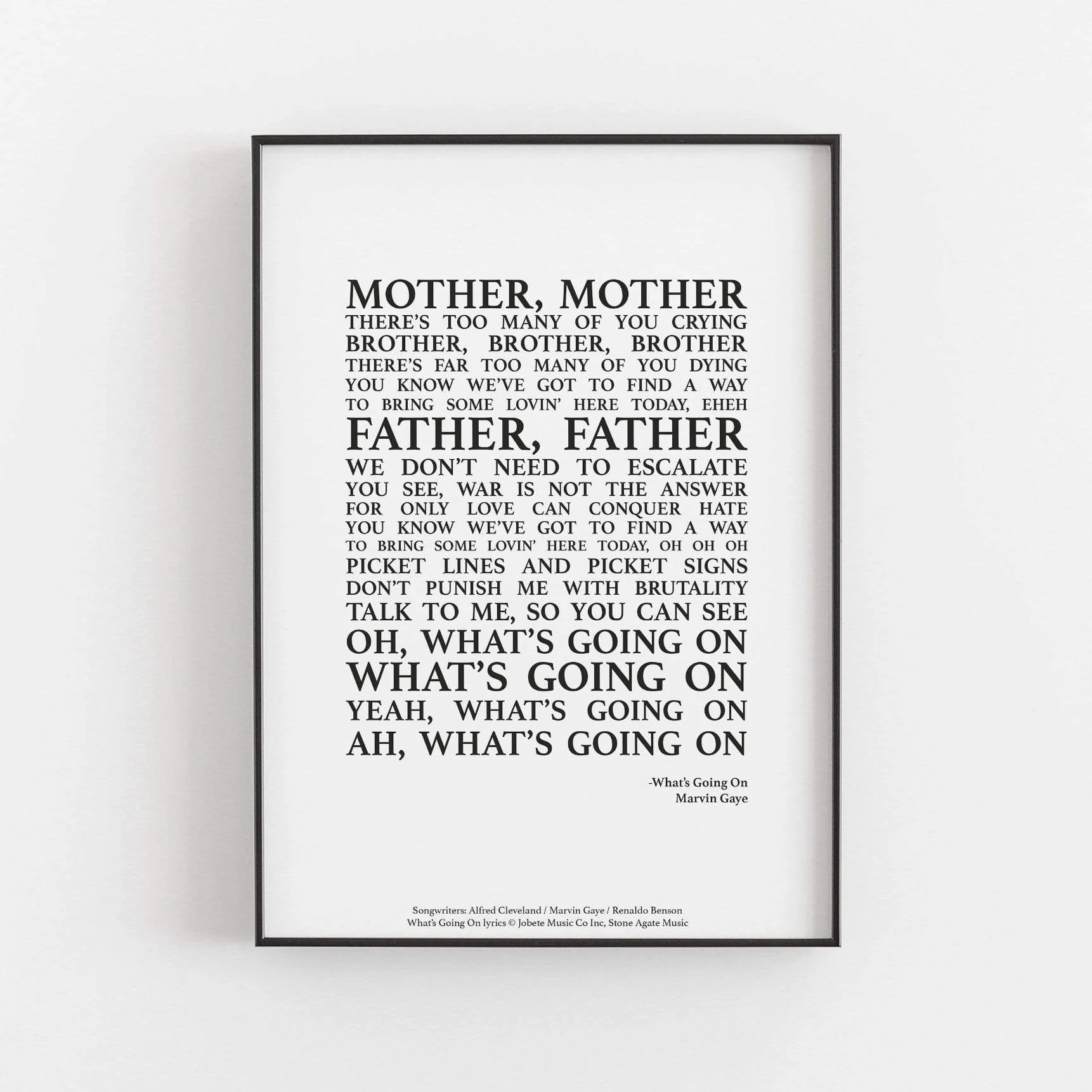
Through the power of words, writers can transport readers to distant worlds, evoke deep emotions, and share profound insights. Throughout this exploration of creative writing examples, we’ve witnessed the diverse tapestry of possibilities, from captivating personal essays to timeless poetry, from gripping screenplays to enchanting song lyrics.
Whether you’re a seasoned writer or just starting your creative journey, the key lies in unlocking your imagination and letting your ideas flow freely. So don’t forget that AhaSlides provides a dynamic platform for creative writing, offering interactive features that can enhance your storytelling. Whether you’re crafting a captivating presentation, conducting a workshop, or seeking feedback on your work, AhaSlides empowers you to engage with your audience in new and exciting ways.
FAQs About Creative Writing Examples
What is a good example of creative writing.
One famous example of creative writing is the opening paragraph of Charles Dickens’ novel “ A Tale of Two Cities “: “It was the best of times, it was the worst of times, it was the age of wisdom, it was the age of foolishness, it was the epoch of belief, it was the epoch of incredulity, it was the season of Light, it was the season of Darkness, it was the spring of hope, it was the winter of despair, we had everything before us, we had nothing before us, we were all going direct to Heaven, we were all going direct the other way—in short, the period was so far like the present period, that some of its noisiest authorities insisted on its being received, for good or for evil, in the superlative degree of comparison only.”
Is a verse example of creative writing?
Yes, a verse can be a good example of creative writing. Creative writing encompasses a wide range of forms and styles, and poetry or verse is certainly one of them.
Ref: Study.com

A writer who wants to create practical and valuable content for the audience

More from AhaSlides


70 Picture Prompts for Creative Writing (with Free Slides)
Share this post!
Visual writing prompts help young writers generate new ideas and overcome writer’s block. We’ve put together 70 picture prompts for creative writing that you can use in your writing centers or lesson plans to get your students’ creative juices flowing.
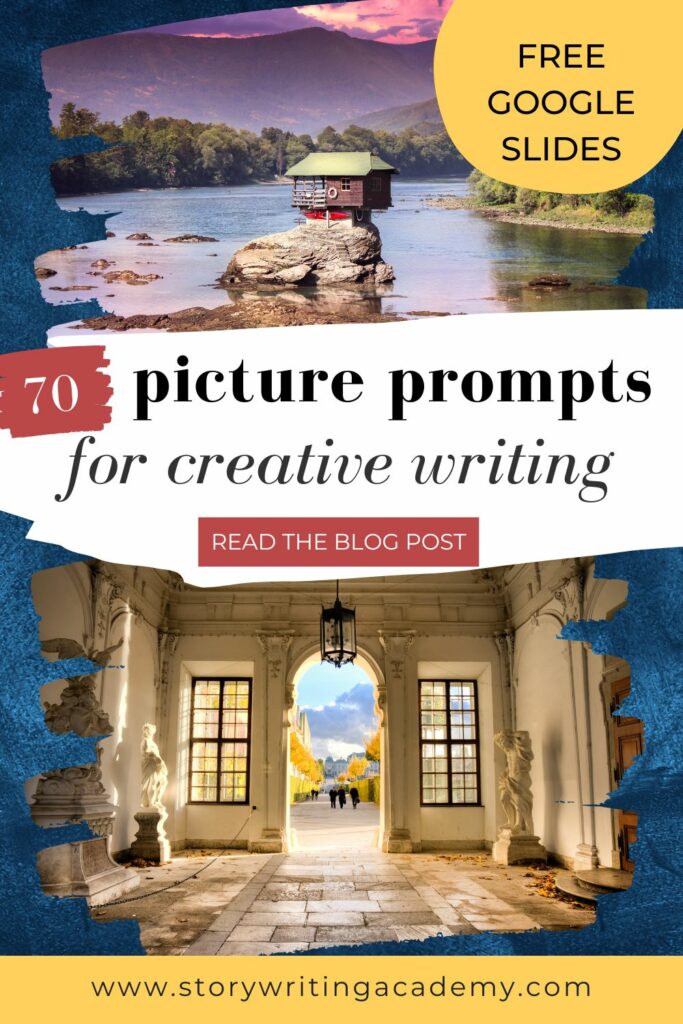
Picture Writing Prompts for All Ages
Writers of all ages and experience levels can get stuck thinking about what to write. Writer’s block is not just a challenge for reluctant writers. Even professional writers have days when they feel less than inspired.
Visual prompts can result in a vast array of story ideas. A single image viewed by ten writers will result in ten completely different stories. Even if you use verbal cues to get students thinking about the picture, each student will still write a unique response to the image.
Visual creative writing prompts are fantastic for elementary school because younger students often relate more to a pictorial prompt than a written one, but don’t shy away from using these with high school and middle school students as well. Pictures make a fun alternative to your typical writing prompts and story starters and can help shake up your regular routine.
How to Use Picture Prompts for Creative Writing
There’s no limit to the ways you can use writing prompts. Here are some of our favorite ways to incorporate image prompts into your weekly lesson plans .
- Writing Center. Print cards or writing pages with these images on them and put them in a writing center for your students to discover at their own pace.
- Specific Skills. Use story picture prompts to help kids work on specific writing skills. For example, you could work on descriptive writing by having them describe the setting of the picture in detail. Or you could work on character development by having them make up a history for a person in a picture.
- Warm-up Activity: You could pop the pictures into Google slides and project an image on a screen or whiteboard for the first fifteen minutes of class and have students work on a short story as soon as they enter the class.
No matter how you decide to use them—whether at home or in the classroom—photographic writing prompts are a great way to cultivate a daily writing habit and encourage kids to explore new topics.
70 Pictures for Writing Prompts
We’ve selected 70 of the most interesting pictures we could find for this exercise. When choosing photos for writing prompts, we look for high-quality photos with intriguing subject matter, but we try to go beyond that. We want to share images that suggest a story, that make the viewer ask questions and wonder why things are the way they are.
We want to feel propelled to explore questions like, What happened before the photo that led to this moment? What are we witnessing in this photo? What’s about to happen?
A photo doesn’t make much of a story starter if it doesn’t suggest that there might be a bigger picture lurking beneath the surface.
We hope you and your students love these picture prompts for creative writing as much as we do. If you love them, go ahead and scroll to the bottom to grab your own copy.
We’ve included a couple of questions with each picture that you could use to spark pre-writing conversations in your classroom, which can be helpful when working with younger students who might need a little more direction.

Sign Up for Your FREE Picture Writing Prompt Slides
You have successfully joined our subscriber list.
Whose cat is this? What is he looking at? Where is he?

What is the owl thinking about? Is he alone? What does he hope to eat for dinner?

Who are these frogs? What is their relationship with each other? Why are they taking photos?

How did the dog get a phone? Why is he taking selfies? What is he doing with the pictures he takes?

This cat doesn’t look too happy. What’s bugging him? Did he get too many phone calls or is he waiting on an important call that’s taking too long to come?

What do these chicks think of the dog? What does the dog think of the chicks? Do you think they can communicate with each other? If so, what would they say?

Where do these lemurs live? What are they looking at? What is something unusual that might happen to them?

What is this fox doing? Is he yawning and stretching or is he trying to scare someone away? What kind of mischief does he like to get up to?

Is this wolf alone? If not, who is with him? What is he planning to do? Does he have a family to feed or protect?

What is this child doing on the laptop? Can he actually read and type or is he just playing? If he can read and type, how did he learn that at such a young age? What other cool things can he do?

Where is this woman? Is she lost? How did she get to this street? What interesting things might she discover as she explores this new city?

Why is the dog wearing glasses? Can he see through them? What are he and the girl doing? How does he feel about it?

Who are these two little boys? What is their relationship with each other? What is the teddy bear’s story?

Who are these children? Why are they running? Is it a race or are they playing a game? Who’s going to win?

Whose horse is this? Does the little boy own it or does he just visit it? Can the horse talk? How does the boy feel when he’s with the horse?

What is this boy reading? Does the book have magical powers? Does the boy? Do the stories in the book become real or does something else special happen?

Where is this man? How did he get there? What is he looking for?

Who is walking over the bridge? What’s on the other side? Is it worth the risk?

What are these people doing on the elephant? Where are they? Are they tourists or is the elephant their pet? What would life with an elephant be like?

Who made this map? It looks old. Has it been hidden away for a long time? Who discovered it and how? What does it lead to?

Whose typewriter is this? What important or secretive thing might they be working on? What could happen if the wrong person finds their work?

Who are these three stuffed animals? Are they living? What is their story?

Whose ukulele is this? Why did they leave it here? Who might find it?

Where is the owner of the bike? Where does this path lead? What if the bike’s not there when the owner returns?

Whose shoes are these? Why did they leave them here? Why are they so dirty?

Who was reading the newspaper? What was the most interesting thing they read? Where have they disappeared to?

Who put this sign on the old truck? What do you think of it? How did the truck end up in its current condition and location?

Who set the table? Who are they expecting? What special occasion are they celebrating? What could go wrong?

Whose birthday cake is this? Are they having a party? Who is there? Who did they want to have there that didn’t show up?

Who lives here? How do they access their home? What is their life like?

Who built the igloo? Where is it? How does it feel to spend the night inside it?

What is the history of this castle? Who lives in it now? Does it have any special or magical features?

Is this barn abandoned or do people live on the property? What kind of animals might live here? How do they keep themselves entertained?

What is it like living on a houseboat? What kind of community do you think forms among the neighbors? Imagine you live on one of these boats and think about how your daily life might change. What interesting things could you do if you lived here? What would you miss the most?

Where is this hut? Who lives here? What mystery might unfold if a stranger came knocking at their door?

What is this lighthouse called? Who runs it? How often do they leave? What is the most memorable experience they’ve had as a lighthouse operator?

How did this house get here? Does anyone live in it? What would life be like here?

Where is this festive street? Are the people there celebrating something? Where is everybody?

Who lives here? How did they build this house? Are they hiding from something? What does it look like inside?

Whose notebook is this? Why did they leave it here? What’s written in it and how might it change the life of the person who finds it?

What are these women doing? What are they supposed to be doing? Will they be in trouble if they get caught?

Who might be represented in this statue? Why is she being pulled by lions? What amazing things might she have done to deserve a statue in this prominent place?

Where is this? Who is riding in the hot air balloons? Where are they going and why?

How old is this tree? Where is it? What are some of the most fascinating stories it could tell?

Where is this carousel? Who is riding it? Can you think of a special or strange story about how it came to exist in this particular place?

What are these people thinking about? What’s at stake for them? What happens if one of them sneezes?

Where are these penguins? What are they talking about? Which one of them is the leader?

What is this place? Was it designed to be open like this or was it once part of someone’s home or a public building? How have people’s opinions of this place changed over time?

Who are these kids? Is this what they’re supposed to be doing? What happens when their teacher sees them?

Who is supposed to ride in this boat? Where are they going? Will they make it there?

Is this plane special to someone? What did they have to do to get it/build it? Where will they fly to in it?

Who decorated this train car? Which passengers will fill it up? What will they talk about?

Whose skis are these? Why are they sticking out of the snow? How did their owner get down the mountain without them?

Where does this gondola go? Who rides it? How does it feel to ride it?

Who’s driving the monster truck? Why is it at the beach? What is it going to crush? Who is watching?

Where is the boat going? Who is on it? What is their mission?

What city is the helicopter flying over? Why? Is the driver looking for something specific or do they have a special delivery?

What’s the little boy doing in the boat? Is he alone or is someone with him? Where is he trying to go?

Who is in the sub? What’s it like inside? What are they doing?

Whose book is this? What’s it about? What’s happening to it?

How did that piece of land with the house on it break off from the rest of the world? Why? Where is it going? Is anyone in the house?

Who is this girl? Where is she? Who is she shooting at?

Where does this scene take place? Is the lizard/dragon good or bad? What is its relationship with the girl?

What do these books represent? What kind of world is this? What (or who) is inside the books?

What are these dinosaurs discussing? Where are they? What do they do for fun?

Whose cottage is this? Do they still live there? If not, where have they gone? If so, what do they do there?

What is the moth thinking about? Is it alone? What’s the biggest challenge it faces in this moment?

Who is the owl looking at? Has it read these books? What is its greatest talent?

Where are these trees? Why are they pink? Do they have any special powers or features?

What do you think? Which kind of pictures do you like best for creative writing prompts ? Let us know in the comments.
Tuesday 5th of March 2024
I LOVE these! My daughter has always struggled with written story prompts and an internet search this week convinced me of the value of picture prompts for reluctant readers/writers (https://youcanjournal.com/journal-picture-prompts/ if you're interested!). I'll definitely be using these to help improve her writing skills. Thanks so much!
Tuesday 26th of December 2023
I think the idea of using picture prompts is a great idea. It initiates oral language thus building vocabulary. It allows lends itself to students working in small groups to stimulate new ideas. The prompts engage the students and gives the teacher the opportunity to focus on specific writing skills.
luke elford
Wednesday 13th of December 2023
cloey mckay
Tuesday 17th of October 2023
I tried this with myself and my 6th-grade students, and they love it. it gives room for so much creativity.
Nayyar Abbas
Tuesday 30th of May 2023
This is very good idea and it really works, viewing these one try to think one's own way that what these pictures are telling or asking? I also recommend that this idea should also be given to the students for building their creative instinct.
Privacy Overview
Jump to navigation
- Inside Writing
- Teacher's Guides
Student Models
- Writing Topics
- Minilessons
- Shopping Cart
- Inside Grammar
- Grammar Adventures
- CCSS Correlations
- Infographics
Student Writing Models
How do I use student models in my classroom?

When you need an example written by a student, check out our vast collection of free student models. Scroll through the list, or search for a mode of writing such as “explanatory” or “persuasive.”
Jump to . . .
Explanatory writing.
- How Much I Know About Space Explanatory Paragraph
- My Favorite Pet Explanatory Paragraph
- Sweet Spring Explanatory Paragraph
Narrative Writing
- A Happy Day Narrative Paragraph
- My Trip to Mexico Narrative Paragraph
Creative Writing
- Happy Easter Story Paragraph
- Leaf Person Story
Research Writing
- Parrots Report
- If I Were President Explanatory Paragraph
- My Dad Personal Narrative
- The Horrible Day Personal Narrative
Response to Literature
- One Great Book Book Review
- A Fable Story
- Ant Poem Poem
- The Missing Coin Story
- Winter Words Poem
- Horses Report
- Ladybugs Report
- How to Make Boiled Eggs How-To
Persuasive Writing
- Plastic, Paper, or Cloth? Persuasive Paragraph
- The Funny Dance Personal Narrative
- The Sled Run Personal Narrative
- Hello, Spring! Poem
- Cheetahs Report
Business Writing
- Dear Ms. Nathan Email
- My Favorite Place to Go Description
- My Mother Personal Essay
- Rules Personal Essay
- Shadow Fort Description
- Adopting a Pet from the Pound Editorial
- Letter to the Editor Letter to the Editor
- Ann Personal Narrative
- Grandpa, Chaz, and Me Personal Narrative
- Indy’s Life Story Personal Narrative
- Jet Bikes Personal Narrative
- The Day I Took the Spotlight Personal Narrative
- A Story of Survival Book Review
- Chloe’s Day Story
- Did You Ever Look At . . . Poem
- Dreams Poem
- I Am Attean Poem
- Sloppy Joes Poem
- The Civil War Poem
- The Haunted House Story
- The Terror of Kansas Story
- When I Was Upside Down Poem
- Deer Don’t Need to Flee to Stay Trouble-Free! Report
- Height-Challenged German Shepherd Report
- Friendship Definition
- What Really Matters News Feature
- Cheating in America Problem-Solution
- Hang Up and Drive Editorial
- Musical Arts Editorial
- Summer: 15 Days or 2 1/2 Months? Editorial
- A Cowboy's Journal Fictionalized Journal Entry
- Giving Life Personal Narrative
- The Great Paw Paw Personal Narrative
- The Racist Warehouse Personal Narrative
- Limadastrin Poem
- The Best Little Girl in the World Book Review
- How the Stars Came to Be Story
- Linden’s Library Story
- My Backyard Poem
- The Call Poem
- I Am Latvia Research Report
- Mir Pushed the Frontier of Space Research Report
- The Aloha State Research Report
- The Incredible Egg Observation Report
- Unique Wolves Research Report
- Dear Dr. Larson Email
Personal Writing
- A Lesson to Learn Journal
- Caught in the Net Definition
- From Bed Bound to Breaking Boards News Feature
- If Only They Knew Comparison-Contrast
- Save the Elephants Cause-Effect
- Student Entrepreneur Reaches for Dreams of the Sky News Feature
- Internet Plagiarism Problem-Solution
- Mosquito Madness Pet Peeve
- Anticipating the Dream Personal Narrative
- Huddling Together Personal Narrative
- H’s Hickory Chips Personal Narrative
- It’s a Boy! Personal Narrative
- My Greatest Instrument Personal Narrative
- Snapshots Personal Narrative
- Take Me to Casablanca Personal Narrative
- The Boy with Chris Pine Blue Eyes Personal Narrative
- The Climb Personal Narrative
- The House on Medford Avenue Personal Narrative
- Adam’s Train of Ghosts Music Review
- Diary of Gaspard Fictionalized Journal Entry
- My Interpretation of The Joy Luck Club Literary Analysis
- Mama’s Stitches Poem
- The KHS Press Play
- Rosa Parks Research Report
- The Killer Bean Research Report
- Mid-Project Report on History Paper Email
- Vegetarian Lunch Options at Bay High Email
Walking by the Way
the road to inspired learning
Eight Free Creative Writing Lessons
February 17, 2012 by Ami 17 Comments
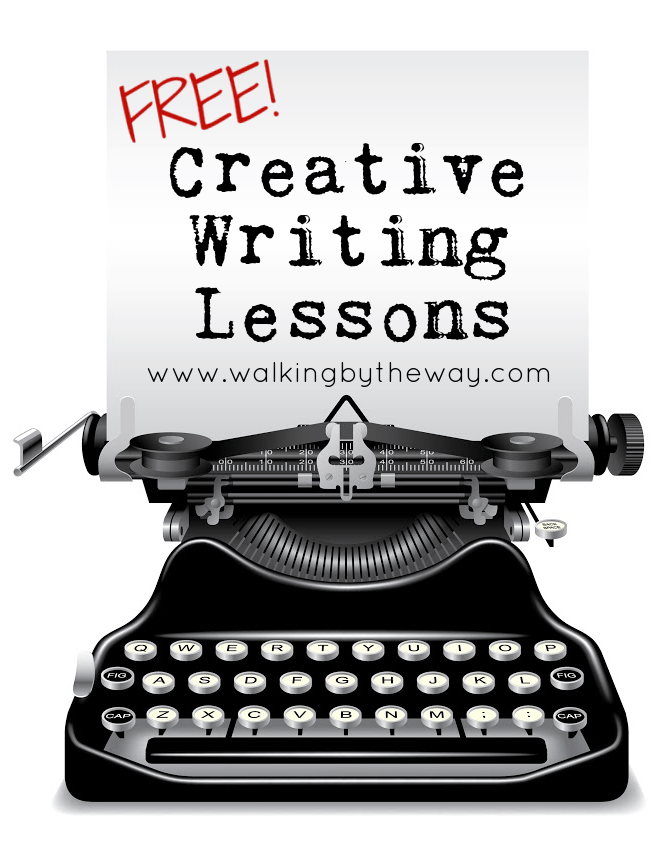
I know I throw around the word favorite all the time. But this is the truth: teaching creative writing lessons is my favorite.
I have taught creative writing enrichment for summer school students. I have taught creative writing in various homeschool settings and co-ops. I have taught big students and little students. And I love it.
Since I love to share homeschool co-op class ideas , I have compiled the creative writing lessons from a co-op class that I taught.
Creative Writing Lessons for a Homeschool Co-op Class
First, please remember that any teacher can use these creative writing lessons. You don’t need to be teaching homeschoolers. You can be a classroom teacher or a homeschool teacher at home with one student. You can even be a librarian who needs a fun program series.
Second, I used these creative writing lesson plans with upper elementary students (with maybe a few 7th graders thrown in). However, you can adapt and use them for older students or younger students!
Creative Writing Lesson Plans
Creative writing lesson one.
The first lesson focuses on cliché and metaphor. It prompts students to consider how words matter.
Grab lesson one here .
Creative Writing Lesson Two
The second lesson teaches students about sensory details: why they are important and how to include them in their writing. Students will begin using sensory details to evoke smells and sounds and sights.
Grab lesson two here.
Creative Writing Lesson Three
The third lesson introduces showing vs. telling. Students learn how to recognize authors who utilize showing, and students are able to articulate the difference between showing and telling.
Grab lesson three here.
Creative Writing Lesson Four
The fourth lesson teaches students how to capture images. We use examples of poetry and prose to discuss this important writing skill.
Grab lesson four here.
Creative Writing Lesson Five
The fifth lesson introduces the story elements of character and conflict.
Note: You may choose to split this lesson into two lessons since it covers two big elements. I only had nine weeks with my students, so I had to jam character and conflict together.
Grab lesson five here.
Creative Writing Lesson Six
The sixth lesson introduces the students to point of view and perspective. We have fun reading poems and using pictures to write descriptions from different points of view.
Grab lesson six here.
Creative Writing Lesson Seven
The seventh lesson puts everything we’ve learned together. I read the students some fractured fairy tales, and we watch some, too. Students then use the prewriting activities and their imaginations to begin drafting their own fractured fairy tales.
Grab lesson seven here.
Creative Writing Lesson Eight
The eighth lesson focuses on revision. After a mini-lesson, students partner up for peer editing.
Grab lesson eight here .
For our final class day, students bring revised work, and I host coffee shop readings. This is a memorable experience for students (and their teacher).
Creative Writing Lessons FAQ
Since posting these creative writing lessons, I have had lots of questions. I decided to compile them here in case you have the same question.
Q: What are copywork quotes? A: Copywork quotes are simply great quotes that students copy as part of their homework assignments. You can use any quotes about writing. I’ve included my favorites throughout the printable packs.
Q: Can I use this with a younger or older student? A: Absolutely! Just adapt it to meet the needs of your student.
Q: Can I use this for my library’s programming or my homeschool co-op class? A: Yes! I just ask that it not be used for profit.
Do you have any questions about teaching creative writing? What’s your biggest hang-up when it comes to teaching creative writing? I’d love to hear from you and help you solve the issue.

January 7, 2016 at 1:57 pm
Hi Theresa,
As long as you are not profitting from using them, they are yours to use! Enjoy! Wish I could be there to help facilitate all those young writers!
[…] Creative Writing Class […]
Leave a Reply Cancel reply
Your email address will not be published. Required fields are marked *
Save my name, email, and website in this browser for the next time I comment.
All Formats
Resource types, all resource types.
- Rating Count
- Price (Ascending)
- Price (Descending)
- Most Recent
Free 8th grade writing rubrics
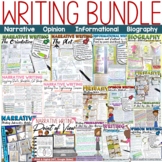
Writing Units Bundle Narrative Opinion Persuasive Biography Informative
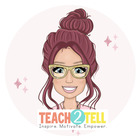
Phonics - A comprehensive beginner newcomer phonics program - bundle ESL/ELL

Reading Comprehension Strategies MEGA Bundle | Social Emotional Learning | ELA

Cursive Handwriting Practice Worksheets
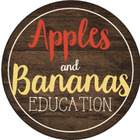
7th & 8th Grade ELA Worksheets. 156 Grammar Lessons & Reviews. 362 PAGES. BUNDLE

8th Grade Math Anchor Charts for Interactive Notebooks and Posters Bundle
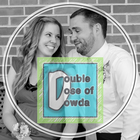
5th-8th Grade U.S. History | Reconstruction Era Lesson Plan Unit | Google Apps!
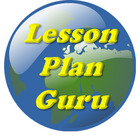
MS & HS Science Labs, Activities, STEM Challenges, & Web Quests (Growing Bundle)

FREE Narrative Writing Checklists | Rubrics | All Ages | Editing Assessment

Writing Rubric - Expository, Argumentative, Narrative (Common Core)

RACE Strategy Grading Rubric

Creative Writing - Student Peer/Self Editing Checklist and Rubric

ESL Writing Activities: Quick Write Rubric & Prompt

Persuasive Essay Rubric (Common Core Aligned)

Narrative Writing Checklist - FREE - Primary Exploration - Grade 1, 2, 3, 4, 5
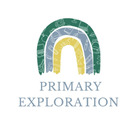
Argumentative Writing Essay Rubric and Peer Review FREE

- Easel Activity
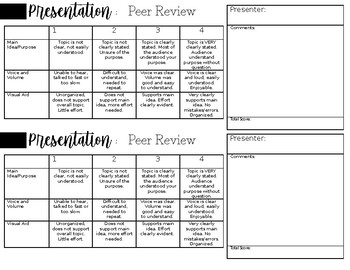
Presentation & Partner Peer Review Rubric

Middle School Writing Rubric

FREE Writing Rubrics for Secondary English

Argument Essay Rubric and Score Card

- Word Document File
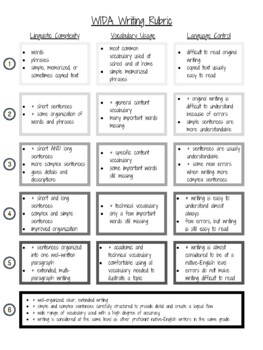
WIDA Writing Rubric: SCAFFOLDED and STUDENT-FRIENDLY
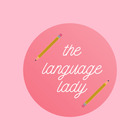
Ontario Writing Rubric & Achievment Chart Grade 1-8

ELL Writing Rubric

Argumentative Essay Graphic Organizer Rubrics FREE
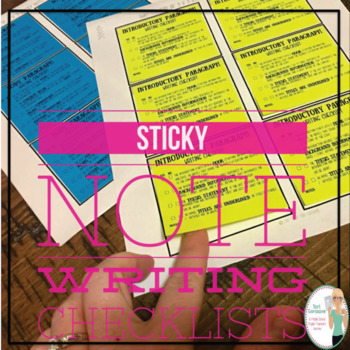
FREE | Sticky Note Writing Checklists (Essay Organization)

Student-Teacher Writing Conference Form

BOOK REPORT + RUBRIC: MOVIE POSTER PROJECT!

Paragraph Writing Rubric

The Great Gatsby F Scott Fitzgerald - FREE Project Outline and Assignment Rubric

Race Strategy Response Templates For Google Classroom Distance Learning FREE
- Google Apps™
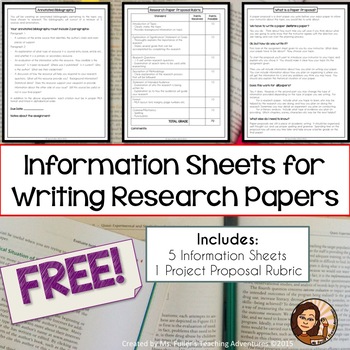
Sample Packet of MLA Research Handouts

Organizing Social Studies Projects For Any Content (W/Rubrics) Gr.6-9
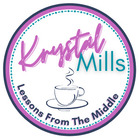
Find Writing resources | TPT
Learn more about writing resources.
Writing worksheets can help your child develop essential writing and literacy skills needed for school and life. If you’re a teacher or parent looking for printable and digital writing resources to help your student learn a writing concept, look no further! TPT has an extensive collection of resources, created by other teachers, that are designed to help with any need across grade levels.
For elementary students who are just learning to write, you can use worksheets to practice letter formation. Students in middle and high school can use learning stations to learn how to write and revise essays. With plenty of TPT resources at your fingertips, you can sharpen your student's writing skills in no time. Extend writing activities beyond the classroom and observe as your child nurtures their imagination, enriches their vocabulary, and enhances their storytelling prowess.
Fun and engaging writing activities to try
Here are a few ideas for writing activities — from our teacher-created resources — that you can find on TPT and that are designed to teach students how to write effectively. (Pro tip: These worksheets serve as an excellent complement to our reading materials.)
Encourage students to keep daily journals where they can freely express their thoughts, feelings, and experiences. This practice helps them develop their writing style and build the habit of writing regularly.
Writing Prompts
Provide engaging prompts that encourage imaginative storytelling. For instance, you could ask students to write about a world without the internet, or ask them to describe something only using one of their five senses (sight, sound, smell, touch, or taste).
Peer Editing
Have students exchange their written work with a peer for feedback. This helps them strengthen their ability to identify and correct mistakes in grammar, punctuation, and spelling; give constructive criticism; and revise their writing based on feedback.
Sentence and Paragraph Construction
Provide sentence and paragraph building exercises to help students understand the basic structure of writing and how to organize their ideas coherently.
Letter Writing
Ask students to write letters to real or fictional recipients. They could compose formal letters, persuasive letters on specific topics, thank-you notes, or postcards.
Create a classroom blog where students can publish their writing for a wider audience. This teaches them to write for a purpose and consider their audience's perspective.
Research Papers
Guide students through the process of researching and writing informative or argumentative essays. Teach them how to construct persuasive arguments and counterarguments on various topics, include evidence, and cite sources.
Poetry Writing
Explore different forms of poetry, such as haikus, sonnets, and free verse. Encourage students to experiment with imagery, rhythm, and metaphor.
By incorporating these (and other!) writing activities into your lesson plans, you can nurture a love for writing.
Frequently asked questions about teaching writing
What types of writing resources are available on tpt.
There are many different types of writing resources sold by Sellers on TPT. Some popular writing lessons include creative writing, poetry, writing essays, writing expository, and handwriting.
How do I find writing lessons on TPT?
Educators can save time preparing writing lessons with resources created by experienced teachers. Simply start a search for writing resources on the TPT marketplace, and filter by grade level, price, and/or resource type to find materials that've been proven to work in classrooms like yours. No matter what you’re teaching, there are plenty of writing lessons and activities sold by Sellers on TPT that are tailored to meet your students' skill levels.
- We're hiring
- Help & FAQ
- Privacy policy
- Student privacy
- Terms of service
- Tell us what you think
- History Category
- Psychology Category
- Informative Category
- Analysis Category
- Business Category
- Economics Category
- Health Category
- Literature Category
- Review Category
- Sociology Category
- Technology Category

Finished Papers
Customer Reviews

IMAGES
VIDEO
COMMENTS
These fun and interesting 8th-grade writing prompts will inspire older students to write longer and more in-depth work.
That means they need to have a vast vocabulary and use it effectively. Here are writing prompts to help your students hone their skills: 34. Write a news article about a recent natural disaster. 35. Think about a time when you were extremely proud of yourself. Write a first-person account of your proudest moment. 36.
5. Write a Paragraph in about 100-150 words on the following topic:-. Ans: City Life Narration: Creative Paragraph Writing on "Life in a Big City". For a vivid portrayal in paragraph writing, depict the constant hustle and bustle of "Life in a Big City.. Life in a big city is busy and fast.
8th Grade Writing Worksheets; Eight Grade Language Arts Curriculum; Middle schoolers and teens everywhere can benefit from the resources shared on Journal Buddies. From expository writing prompts and narrative writing prompts (for narrative essays, perhaps) to creative writing prompts, your middle school students need not be overwhelmed with ...
Writing Ideas for 8th Graders— Students of all ages can benefit from writing daily journals—but journaling is an especially beneficial activity for young teens in 8 th grade who are preparing to graduate fro middle school and enter high school. Use these new writing prompts for 8 th graders to help your class reflect on all that they've experienced so far—and to help them prepare for ...
Eighth Grade Creative Writing Worksheets. Help your 8th-grade students perfect their writing skills, with our most popular creative writing printables. These activities and worksheets are fun way for students to learn and grow. We have plenty of poetry and short-story activities for them to enjoy, plus many other types of lessons!
Thus, more effort should be put into students' writing skills by giving them a variety of topics to write on. Here are some 8th-grade writing prompts that will surely help 8th graders. Creative writing prompts for 8th grade. Argumentative writing prompts 8th grade. Descriptive writing prompts for 8th grade.
With the help of these Creative Writing worksheets for Grade 8, teachers can create a dynamic and engaging learning environment that nurtures a love for reading and writing in their students. Quizizz is an innovative platform that offers a wide range of resources, including Creative Writing worksheets for Grade 8, to help teachers enhance their ...
This collection of grade-level writing samples provides teachers of English Language Learners with examples of student writing at each proficiency level. Teachers can use these interactive examples to build their understanding of the different writing competencies and levels within the Benchmarks. Select the competency you wish to view. Boxes ...
1. Unlocking the Creative Minds: Exploring Engaging Writing Prompts for 8th Graders. Unleashing Imagination: Exploring Real-Life Scenarios: 2. Finding Your Voice: Inspiring Personal Narrative Topics for Middle School Writers. 3. Fueling Imagination: Captivating Fiction Writing Ideas to Ignite 8th Graders' Stories. 4.
Examples of Creative Writing Topics for Class 8: Write a story about a character who discovers a hidden talent. Imagine a world where time travel is possible. Write a story about a person who travels back in time to change something in the past. Write a descriptive essay about your dream house. Write a story about a person who finds a ...
Grade 8 - Unit 3 - Creative Writing Unit Focus This unit serves to take grade eight students' knowledge of effective storytelling and elevate it to the next level. This is a critical skill, as we know that narrative writing is the genre that really gives students their own voice and makes writing meaningful and personal.
A lot falls under the term 'creative writing': poetry, short fiction, plays, novels, personal essays, and songs, to name just a few. By virtue of the creativity that characterizes it, creative writing is an extremely versatile art. So instead of defining what creative writing is, it may be easier to understand what it does by looking at ...
Here you will find 8th grade writing worksheets pdfs, plus writing prompt and journal page pdfs. There are tons of great activities and tools you can use to make sure your eighth-grade students are prepared for high school—but one of the absolute best options is to have them start writing a daily journal. To help support you in your efforts ...
8/ Songwriting - Creative Writing Examples: Here are three famous examples of songwriting known for their creative and impactful lyrics: 1/ "Bohemian Rhapsody" by Queen: Queen's epic and operatic "Bohemian Rhapsody" features intricate lyrics that tell a complex narrative and create a timeless rock masterpiece. 2/ "Yesterday" by ...
This project is a creative writing assignment. Students are designing their own school using a "School Handbook" template. I also attached my cover page and rubric that I gave my students to u. Subjects: Creative Writing, End of Year, Visual Arts. Grades: 3 rd - 8 th. Types: Projects, Activities.
Writing Center. Print cards or writing pages with these images on them and put them in a writing center for your students to discover at their own pace. Specific Skills. Use story picture prompts to help kids work on specific writing skills. For example, you could work on descriptive writing by having them describe the setting of the picture in ...
Student Models. When you need an example written by a student, check out our vast collection of free student models. Scroll through the list, or search for a mode of writing such as "explanatory" or "persuasive.".
Creative Writing Lesson Eight. The eighth lesson focuses on revision. After a mini-lesson, students partner up for peer editing. Grab lesson eight here. For our final class day, students bring revised work, and I host coffee shop readings. This is a memorable experience for students (and their teacher).
8 Spectrum Writing Grade 8 Introduction Lesson 2 Imagine the local school principals want everyone in the whole school district to participate in a School Spirit Day. Everyone is supposed to wear school colors, and some prizes will be given for outfits that show the most spirit. Write an explanation for
Grade 8 Reading: Additional Samples (March 2002) 6 Grade 8 Personal/impromptu Writing: Additional Sample 2 Friends Context In this school all students participate in a school-wide write twice a year, in fall and again in spring. Within their regular classrooms, student writes an impromptu essay of approximately 200-300 words in a 50-minute period.
This product contains two rubrics. 1. A presentation peer review rubric. This rubric allows students to give peer feedback for oral presentations. 2. A partner peer review rubric. This rubric allows students to give feedback on how well their team members worked on a presentation/project. Subjects: Writing.
Creative Writing Examples Grade 8. These kinds of 'my essay writing' require a strong stance to be taken upon and establish arguments that would be in favor of the position taken. Also, these arguments must be backed up and our writers know exactly how such writing can be efficiently pulled off.